


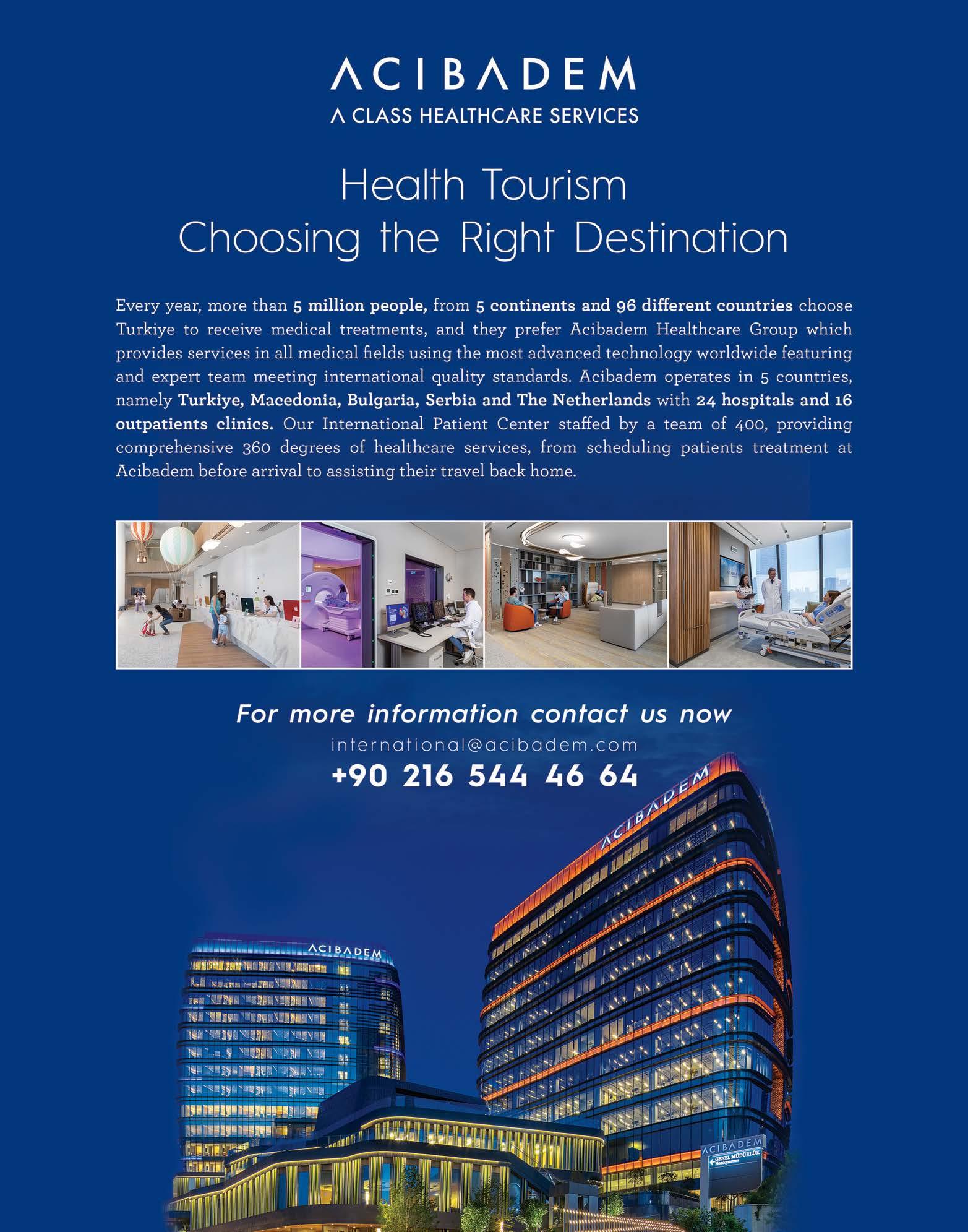





Let me celebrate with you the 200th issue of "Arab Hospital" magazine. I say "our achievement" because we have reached it together. Step by step, we have shared and exchanged efforts, and with your cooperation, we would have achieved less than 100, let alone 200. It is also thanks to our teamwork, credibility and professionalism that we have reached this milestone.
Throughout this joint growth and expansion journey, we faced numerous difficulties and challenges, just like other media outlets, particularly during the COVID-19 pandemic. However, hope was always on our side, and our confidence was significant. We continued our journey until we overcame the difficulties and achieved stability and continuity.
During these years, we have reached 100 after 100 issues and had hundreds of participants in health conferences and medical exhibitions worldwide. We had hundreds of interviews with healthcare providers, health ministers, hospital owners and doctors who shed light on everything new and valuable in this field. We now have over a hundred thousand followers on various social media channels.
Today, after this milestone, we stand proud of our accomplishments. We are proud of your support, our healthcare partners, proud of your trust, our readers and followers. Together, we will achieve new successful milestones! We pledge to remain faithful to you, your trust and the promotion of accurate health information, individual and community health, hospitals, and doctors to achieve this message's success and support those seeking to lead health and community safety.
PublisherPublisher Arab Health Media Communication
President Simon Chammas schammas@tahmag.com
Executive Vice President Mirna Khairallah mirna@tahmag.com
Senior Editor Elham Najem editorial@tahmag.com
Content Executive Jessica Achkar editorial@tahmag.com
Editors
Aline Debes, Mark Steven, Don Karn, Andrew Weichert, Colette Semaan, Abbas Moussa
Content Marketing Manager Jessie Chlela jessie@tahmag.com
Creative Director Rania Khalil rania@tahmag.com
Business Development Manager Wadih Chammas wadih@tahmag.com
IT Manager Elie Yammine elie@tahmag.com

Photographer Hanna Nehme Advertising advertising@thearabhospital.com
OFFICES
IHMC, Cyprus +357 96 158661
Dubai +971 50 2971007
Printing
Distribution
KSA - UAE - OMAN - TURKEY LEBANON - JORDAN - KUWAIT BAHRAIN - QATAR - EGYPT
All images from shutterstock© unless provided by clients .
All rights reserved by the HOSPITALS magazine. No part of this publication can be reproduced in any form without prior permission in writting from the publisher.

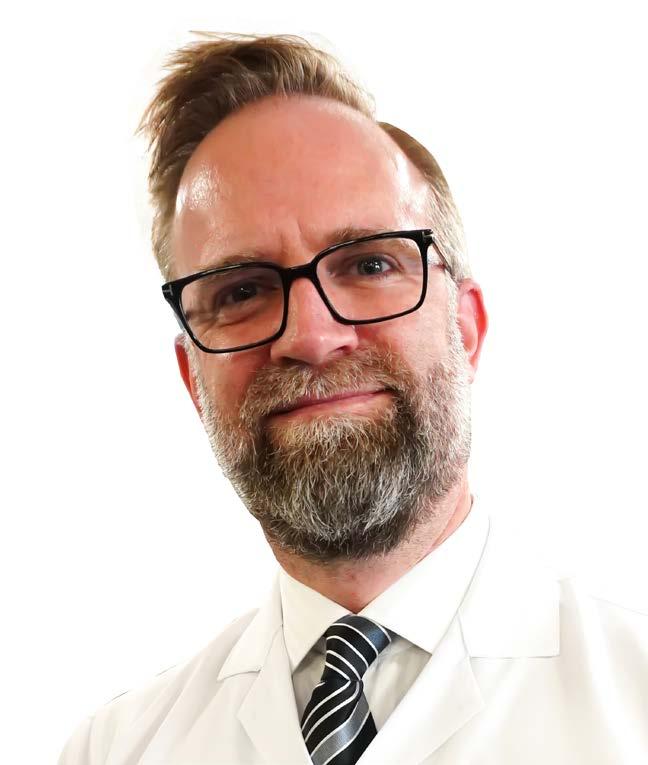

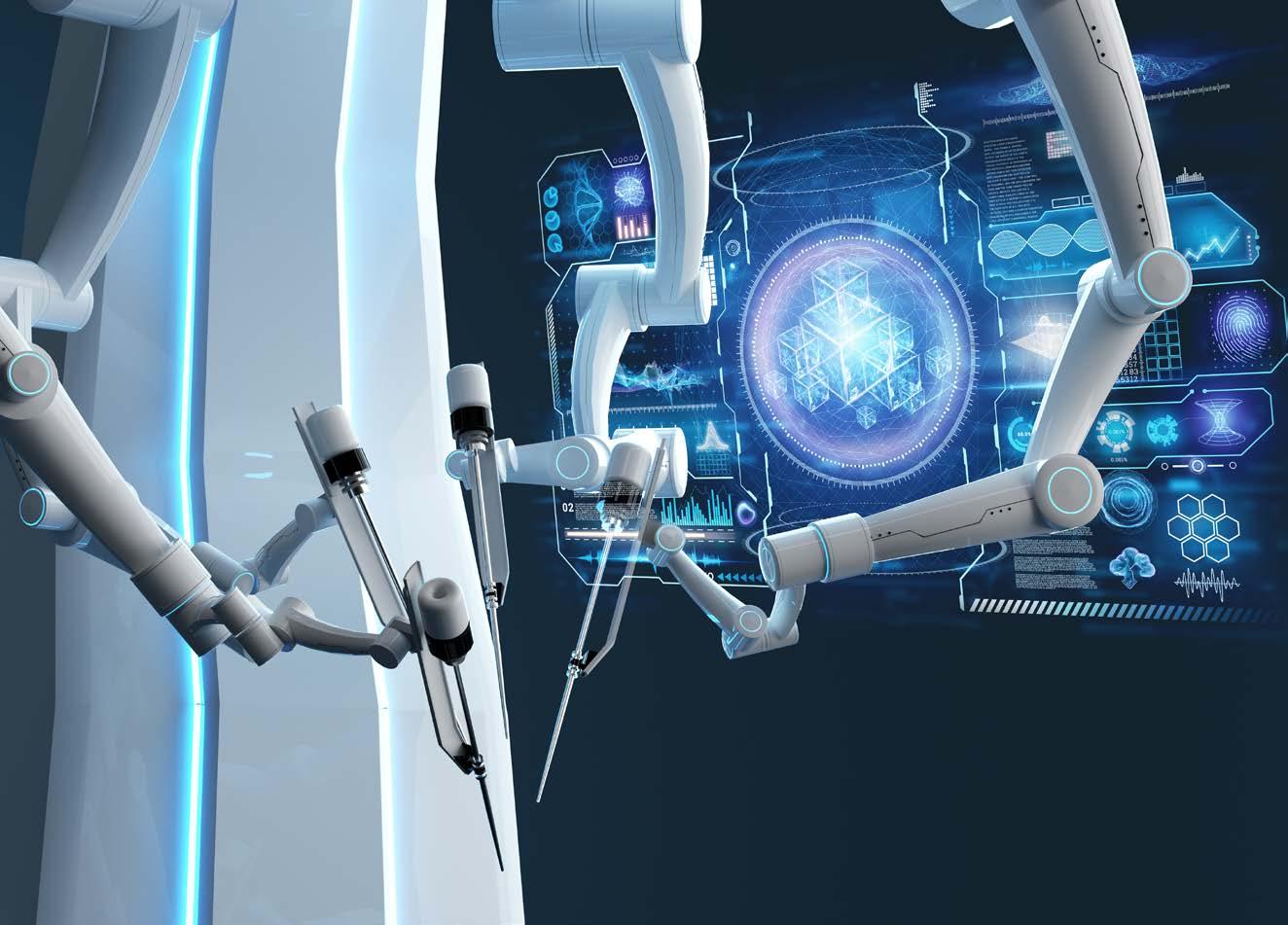



Gain operational efficiencies with this powerful and proven patient safety platform for continuous compliance, data collection, digital tracing, and rounding.

Only JCI Tracers with AMP boasts these unique benefits:
Secure access to the JCIA standards and the ability to score your organization’s performance utilizing the SAFER Matrix
A library with hundreds of customizable tracer templates developed by clinical experts
Comprehensive set of rounding and JCI accreditation tools
Seamless data integration and analytics capability with configurable reports for data-driven decisions and improvements prioritization
For more information, please visit: www.jointcommissioninternational.org or scan the QR code.

44
Magazine"
64
UChicago Medicine

‘A really interesting and beautiful molecule’: After three decades of research, Dean Anderson is still focused on CaMKII
52 LINET




44 "The Arab Hospital Magazine: From Humble Beginnings to Great Success"

Celebrating 200 heartbeats in Healthcare and Media
12 Ms. Jean E. Courtney, Joint Commission International's (JCI) Executive Vice President and Chief Operating Officer
50 Dr. Gordon Bland, Family Medicine Consultant at Clemenceau Medical Center, Dubai
72 Dr. Prithvi Priyadarshini Shivalingaiah, MBBS, MD, DNB, DM, MBA, PGDMLE Gastoenterologist at Clemenceau Medical Center, Dubai
42 Acibadem International: Robotic Interventions and Electrical Solutions in Urology: Robotic & Wired treatments
65 ‘A really interesting and beautiful molecule’: After three decades of research, Dean Anderson is still focused on CaMKII by UChicago Medicine
82 Acibadem International Robotic Interventions and Electrical Solutions in Urology
10 Aaron Crane: What’s cost effectiveness of health going to take?
48 How effective assessment of medical learners can dramatically improve the quality and safety of patient care
52 When tilting matters...Turn into a new gold standard of care
62 A modern technology for weight reduction has been introduced in Al-Ahli Hospital, without the need for endoscopy or anesthesia

76 Al-Ahli Hospital treats skin inflammations caused by varicose veins using the latest advanced therapeutic techniques, namely high-frequency ultrasound technology
38 Robotic Surgery
54 Technology in the service of diabetes patients

58 Obesity Treatment Centers & Weight Management
68 The role of the healthcare team takes center stage
74 Respiratory Syncytial Virus (RSV)
80 Electrocardiogram (ECG)
Simon Chammas The Publisher and General Manager of "The Arab HospitalMEA
When tilting matters...Turn into a new gold standard of care

Saqr Hospital in Ras Al Khaimah – an affiliate of Emirates Health Services (EHS) – has opened a Haematology Clinic at its children’s clinic, admitting children suffering from hereditary and non-hereditary blood diseases, as part of EHS’ commitment to providing top-quality, specialized healthcare services.

Dr. Essam Al Zarouni, Acting Executive Director of the Medical Services Sector at EHS, asserted: “Emirates Health Services continues to offer its full support for all of its affiliated health facilities, in an effort to achieve its ambitious goals, which are aligned with the UAE’s National Strategy for Wellbeing. This is also in line with our own strategy to develop a system that offers sustainable, integrated, and innovative health services, accessible to all members of the community in the UAE, further strengthening our competitiveness at the local and international levels. It allows us to provide distinguished healthcare services that adhere to the ‘We the UAE 2031’ national vision, and pave the way for achieving the goals of the UAE Centennial 2071 Plan.”

For her part, Dr. Mona Al-Ayyan, Director of Saqr Hospital, said: “Opening the Children’s Haematology Clinic forms part of our ongoing efforts to strengthen the health services system

provided at the hospital to all patients, and particularly, to children. Saqr Hospital strives to enhance the quality of health services offered to children, cementing the leading role that both the hospital and Emirates Health Services play in that regard. Launching this clinic will contribute significantly towards achieving the objectives of the UAE’s National Strategy for Wellbeing, in addition to supporting EHS’ goals and strategy to develop comprehensive and integrated health and treatment services that meet the highest medical standards and best practices.”
Meanwhile, Dr. Sally Al-Naeem, Paediatric Haematology and Oncology Consultant at Saqr Hospital, noted: “The Children’s Haematology Clinic will strengthen the services we offer to children suffering from hereditary and non-hereditary blood diseases, such as anaemia, thalassemia, sickle cell anaemia, and G6PD Deficiency in addition to bleeding disorders, including haemophilia and coagulation disorders. Furthermore, the clinic will screen for genetic diseases in newborns and administer tests and treatment for dietary anaemia caused by iron, folic acid and B12 deficiency. It will additionally test and treat idiopathic thrombocytopenic purpura, neutropenia and leukaemia, admitting referred cases from various health centres and clinics affiliated with EHS.
 Dr. Essam Al Zarouni
Dr. Mona Al-Ayyan
Dr. Sally Al-Naeem
Dr. Essam Al Zarouni
Dr. Mona Al-Ayyan
Dr. Sally Al-Naeem
This novel method is enabled by combining bed-framed lateralization and continuous visualization of pulmonary ventilation using a non-invasive, radiation-free electrical impedance tomography (EIT) monitor. The Multicare X bed by LINET has expanded the existing options for lateral positioning with the programmed positioning cycle.


Bed-framed lateral rotation by Multicare X bed is available at the maximal angle of 30° left and 30° right
Go to our new website and discover the Multicare X bed
We say we want to improve the cost effectiveness of health (CEoH). But what does that really mean? Let’s think about it for a moment. The most ambiguous word here is cost. Hearing it, most hospital- and provider-centric leaders would first think about the expenses incurred in their operations: Labor, supplies, utilities, purchased services, etc. And that’s understandable. The cost driver in this objective, however, is really the cost borne by society. It’s the payment for services rendered that is so important in understanding and managing CEoH. And it’s up to us, as providers, to transform our revenue stream so we can deliver on this commitment of cost-effective health, a commitment that embraces the need for a sustainable healthcare system in the United States.
Our current healthcare model – one that is focused on healthcare not health -- was built over decades and is doing exactly what it was designed to do: Treat the symptoms and direct causes impacting individual health and quality of life. We’re treating patients when they seek healthcare rather than helping people stay healthy. Unfortunately, the financial rewards to build hospitals and treat symptoms, compounded by a culture rooted in individual liberty and minimal financial accountability for maintaining health, have led us to a position of financial unsustainability and quality outcomes substantially below those of other developed nations.
Cost-effective health is not achievable in such a system. Instead, we must shift our thinking away from solving direct cause issues and toward focusing on root cause issues. Financial incentives must be directed to the outcomes we value. The question is whether our nation is prepared to value health first and foremost. Our cultural challenges present themselves in the social determinants of health that are so broadly discussed: Education, nutrition, economic stability and social norms. Are we ready to invest in
closing these gaps?
Hospitals are under historic financial duress. The healthcare system bore tremendous expense in supporting our population through the pandemic. In many cases, operating margins remain soft due to shifts in utilization of services and exorbitant increases in the cost of labor, which can lead to limited capacity because of staffing vacancies. At the same time, the aging population and increasing prevalence of chronic illness will demand added capacity in our systems based on the current care model. This is capacity we cannot afford, never mind the absence of skilled workers to deliver the necessary care.
Has there ever been a more perfect moment for transformation? Is the burning platform not hot enough? The answers are in front of us: Address the most fundamental root causes in our society and shift our values toward the health of our communities.
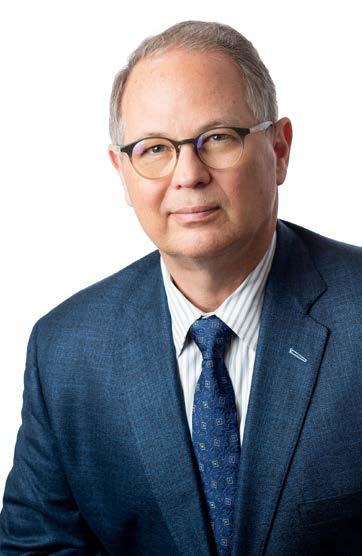
The Healthcare Financial Management Association (HFMA) equips its more than 96,000 members nationwide to navigate a complex healthcare landscape. Finance professionals in the full range of work settings, including hospitals, health systems, physician practices and health plans, trust HFMA to provide the guidance and tools to help them lead their organizations, and the industry, forward. HFMA is a not-for-profit, nonpartisan organization that advances healthcare by collaborating with other key stakeholders to address industry challenges and providing guidance, education, practical tools and solutions, and thought leadership. We lead the financial management of healthcare.
For more information on HFMA international membership, please visit hfma.org/membership/international

Lateral tilt reduces physical strains on the caregiver by 67%
Shorten the length of stay by 1.5 days with the mobilization program.
Bespoken design is an additional bonus.
Low height up to 28 cm helps to reduce patients’ falls.
Smart care solutions help caregivers to be more efficient
The Joint Commission International is the recognized leader in international healthcare accreditation, providing leadership and innovative solutions to help healthcare organizations across all settings improve performance and outcomes. “Hospitals” magazine had the privilege to interview Jean Courtney, Executive Vice President and Chief Operating Officer - Joint Commission International (JCI), to talk about JCI strategy, the global healthcare trends and how COVID-19 affected the JCI and other organizations. Below is the full interview:
Joint Commission International (JCI) has been in existence for nearly 25 years and is recognized as the international accreditation leader. How has the JCI strategy evolved over the years and what does the future hold for JCI?
Joint Commission International has been in existence for nearly 25 years and our parent company, The Joint Commission has been operating over 75 years. We have evolved by being market-driven, staying relevant and constantly innovating. We are now a global enterprise with an unparalleled reach and serve more than 70 countries spanning Asia, Middle East, Africa, Europe, and Latin America. As patient care is shifting from hospital-centric to various care settings such as ambulatory
Ms. Jean E. Courtney Joint Commission International's (JCI) Executive Vice President and Chief Operating Officer
Joint Commission International's (JCI) Executive Vice President and Chief Operating Officer
WE WANT TO CONTINUE TO COLLABORATE WITH A DIVERSE SET OF ORGANIZATIONS RANGING FROM THOSE THAT ARE JUST BEGINNING THEIR QUALITY AND SAFETY JOURNEY TO ORGANIZATIONS ADVANCING TOWARDS HIGH RELIABILITY AND ZERO PATIENT HARM. IN THE SAME RESPECT, WE NEED TO ENHANCE OUR RELEVANCY BY PROVIDING MORE CONTINUING INTERACTION AND SUPPORT TO OUR ACCREDITED ORGANIZATIONS.
clinics, home care, nursing care centers, etc., we have developed accreditation programs to advance our mission by serving programs across the entire continuum of care. We recently introduced a certification program for telehealth services since telehealth utilization across the globe surged at staggering rates during the pandemic and remains a key modality of care.
In terms of our future, our mission remains steadfast -- helping healthcare providers improve the safety and quality of care in the international community. We are focused on innovating ways in which we can collaborate with healthcare providers of any size and type, as well as Ministries of Health and Public Health Agencies. What we have learned from serving international healthcare organizations for nearly 25 years is that though we have successfully delivered accreditation, certification, consulting, and education programs all over the world, there remains an opportunity to expand our services. We want to continue to collaborate with a diverse set of organizations ranging from those that are just beginning their quality and safety journey to organizations advancing towards high reliability and zero patient harm. In the same respect, we need to enhance our relevancy by providing more continuing interaction and support to our accredited organizations. We are evolving our current accreditation engagement model from being episodic to a continuous engagement model.
"We are a global organization with one fundamental objective, which is to help organizations around the world achieve zero patient harm"

We are a global organization with one fundamental objective which is to help organizations around the world achieve zero patient harm. The Middle East is a significant area of focus for us given the rapid pace of healthcare developments taking place here. JCI has been serving the Middle East for more than two decades. In 2006, JCI opened its regional headquarters office in Dubai, United Arab Emirates. We have more than 400 healthcare delivery organizations in this region that are accredited by JCI. In March 2023, we opened our newest office, Joint Commission Arabia, located in Riyadh, Saudi Arabia. The opening of this office further expands JCI’s presence and demonstrates our commitment to serving the Middle East region.
What are the major global trends that you see in the healthcare industry today and how do these trends impact Joint Commission International?
One of the major trends is technology and its impact on driving the patient experience. Most notably digital transformation is taking place at an accelerated pace. Besides the rapid adoption of Electronic Medical Records (EMRs), telehealth and remote monitoring, JCI too, is increasingly leveraging digital technology to share best practices in quality and safety around the world.
For example, we are deploying the JCI Digital Learning Center to enable on-demand access to educational resources such as manuals, webinars, best practices, and tools to help standardize processes and enable continuous learning, improve quality, and mitigate patient safety risks.
Data science plus the associated technologies of artificial intelligence and natural language processing are changing medicine along with many other industries. As an enterprise, we are investing in digital platforms and applications that will have profound implications for quality and patient safety. By collecting, contrasting, and sharing key performance indicators (KPIs) from organizations across the world, Joint
Commission Enterprise will provide meaningful benchmarking and actionable insights to drive global healthcare improvements.
Overtime, the creation of global data sets combined with predictive analytics will shift the patient safety paradigm from a reactive to a proactive approach – we will be able to prevent patient safety events from
The COVID-19 pandemic affected everyone and every organization. How did the pandemic impact JCI quality and patient safety initiatives specifically?
The pandemic has had a profound impact on healthcare. JCI made it a priority to provide advice, resources, and support to our clients during this critical time. JCI rapidly resumed operations by adapting video conferencing technologies to deliver education programs, consulting, and accreditation surveys. This pivot was critical to ensure that we could monitor the organization’s compliance with standards and processes while keeping our staff, customers, and patients safe.
OUR ACCREDITED ORGANIZATIONS HAVE TOLD US THAT THEY FELT BETTER PREPARED AND WERE ABLE TO MORE QUICKLY PIVOT BECAUSE OF THEIR ACCREDITATION EXPERIENCE. THEY HAD THE TOOLS NEEDED TO MAKE NECESSARY CHANGES, MONITOR PROCESSES, AND COMMUNICATE MORE EFFECTIVELY.
In your opinion, did international accredited organizations have an advantage in managing the COVID-19 pandemic?
When organizations commit to JCI accreditation, they undergo a rigorous process to establish policies and procedures to comply with our standards. As a result, they are accustomed to a systematic thought process to engage leadership and adapt to change. Clearly, all organizations had to undergo significant changes to manage the pandemic. Our accredited organizations have told us that they felt better prepared and were able to more quickly pivot because of their accreditation experience. They had the tools needed to make necessary changes, monitor processes, and communicate more effectively.
mented total hip replacement, giving exhibitors real time experience of Proximie’s world-first healthcare solutions.
Proximie, the global health technology platform digitising operating rooms (ORs), announces the GCC launch of the PxLens – the latest in its new line of solutions transforming surgical care.
The PxLens is a lightweight, wearable ‘smart glasses’ device with embedded software. The head-mounted device allows surgeons to share a ‘first-person’ perspective of open surgeries and minimally invasive procedures. The PxLens’ seamless integration into Proximie’s cloudbased platform for telepresence, content management, and insights from the OR makes the device unique in the market. The first-person perspective allows participants observing remotely to have a far clearer picture of the surgery – providing opportunities to advise where necessary and/or learn from cutting-edge surgical techniques. PxLens provides this insight and data without requiring stationery or installed cameras in the OR, giving users more valuable data and insights with minimal equipment and creating scope to use the Proximie platform in a wider array of procedures.
The first live streamed surgery in the Middle East using PxLens took place at Arab Health 2023. The surgery which was live from Guy’s and St Thomas’ NHS Foundation Trust was an unce-

THE PXLENS CAN BE USED BY ANYONE, ANYWHERE, WITHIN 15 MINUTES OF UNBOXING WHEN PAIRED WITH THE PROXIMIE MOBILE APP. VOICE ACTIVATED COMMANDS ENABLE HANDS-FREE CONTROL, AND ROBUST BATTERY PACKS THAT CAN BE SWAPPED MIDPROCEDURE ENSURE EVEN THE LONGEST PROCEDURES CAN BE FULLY STREAMED AND RECORDED.
Dr Nadine Hachach-Haram, Founder and CEO of Proximie, said: “Gulf surgeons want to perform at their best during each procedure, and that means relying on the world’s very latest and best technologies. Lightweight and easy-to-use, PxLens integrates seamlessly with the Proximie platform to provide a superior perspective on surgery and is another exciting addition to our suite of telepresence, content management, and data insights solutions. It shows the positive impact wireless devices can have in creating borderless, seamless ORs".
“The PxLens is another step on Proximie’s journey to help surgeons deliver effective and efficient care. A solution that meets the demands of the advanced health landscape in the UAE and across the Middle East. It provides an insightful first-person perspective and helps make the recording and sharing of procedures ubiquitous. This improves patient care, training, skills development and overall surgical efficiency.”
Pilot procedures with surgeons wearing the PxLens were conducted in the United Kingdom and United States in November 2022. Procedures included colorectal, otolaryngology, orthopaedic, plastics and urology surgeries.
Ms Stella Vig, Consultant General and Vascular Surgeon, Croydon University Hospitals NHS trust, National Clinical Director for Elective care for NHS England, said:
"The PxLens enhances the way we use Proximie here at Croydon. The fact that it’s lightweight and intuitive makes it easy and convenient for anyone to deploy in surgery, even for the first time. Healthcare overall is trying to figure out how to do more with less, and technology like this gives us new ways of training staff and delivering care.”
camera device enhances surgical collaboration and productivity, while improving patient safety, say top practising doctors






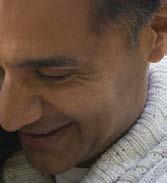




When it comes to cancer treatment, you deserve a team that is focused on human-based care. Our experts get to know you, then tailor treatments to help fit your needs—which could include radiation, surgery, chemotherapy, immunotherapy, cellular therapy, genetic counseling, or a customized lifestyle management plan.
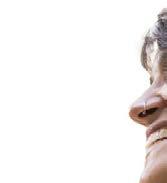

Learn more about the NCI-designated Dan L Duncan Comprehensive Cancer Center at Baylor College of Medicine at StLukesHealth.org/DLDCCC







Al-Ahli Hospital's IVF center: Helping You Build Your Family
Are you struggling to conceive a child? Do you want to start a family, but are having difficulty getting pregnant?

Look no further than Al Ahli Hospital's IVF unit in Doha!
Our team of expert physicians and staff are dedicated to helping couples struggling with infertility.

We offer the latest in assisted reproductive technology, including in vitro fertilization (IVF) and intrauterine insemination (IUI).
We also offer genetic testing (PGS-PGD) ensuring the health of your future child.

We understand that infertility can be a difficult and emotional journey, which is why we offer counseling and support services to our patients.
At our IVF center, we prioritize the safety and comfort of our patients. We provide follow-up care and monitoring to ensure that you and your baby are healthy throughout your pregnancy and after.
Contact Al Ahli Hospital's IVF unit today and let us help you on your journey towards parenthood.
We are keen to help you concieve naturally before any intervention
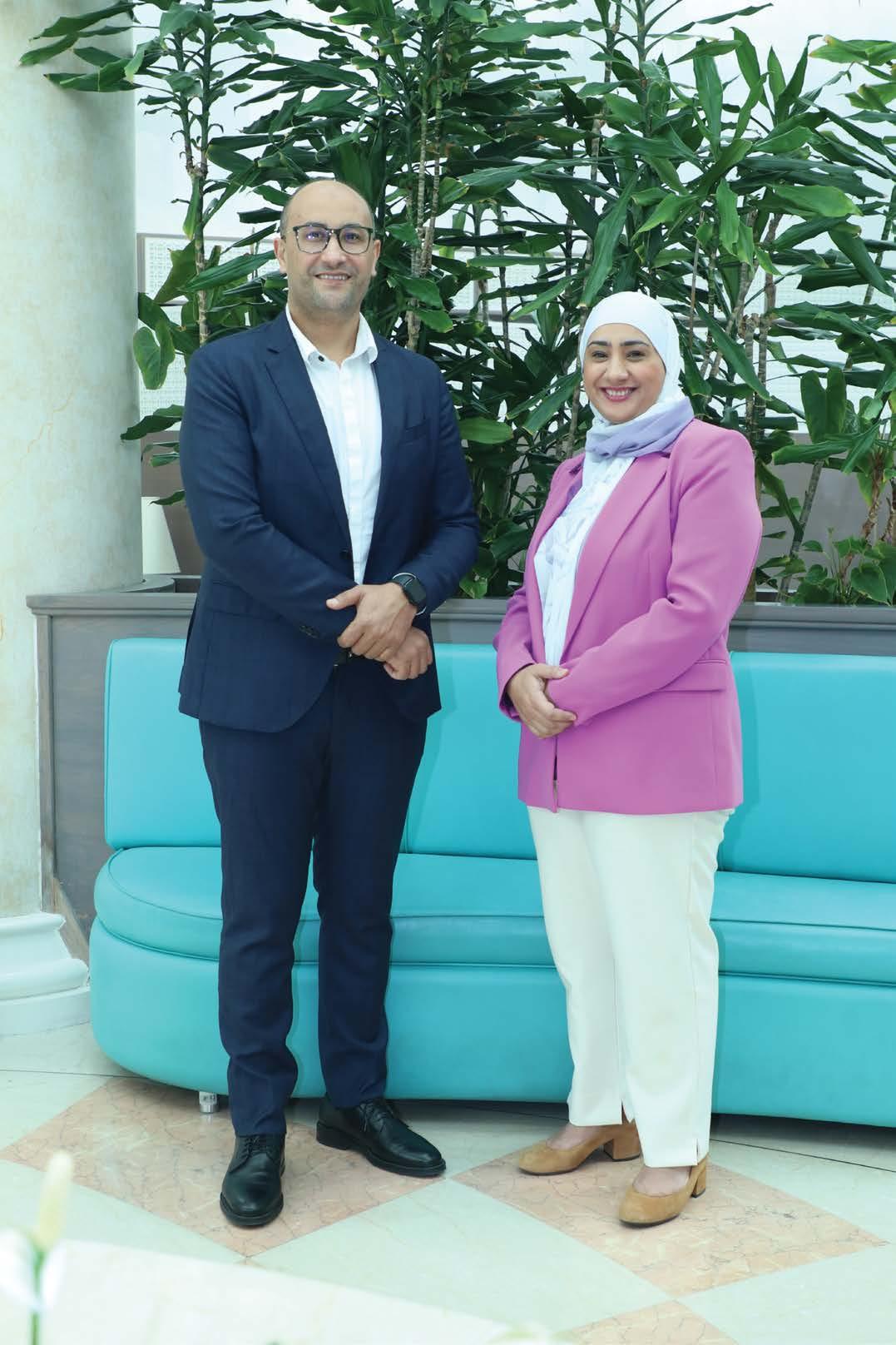




CSO and Founder of Neogap. Together with researchers at Karolinska Institutet, he has authored several articles demonstrating the use of EpiTCer® beads for sensitive T cell antigen specificity detection, highlighted in a study identifying four novel autoantigens in multiple sclerosis, published in Science Advances: https:// www.science.org/doi/10.1126/sciadv.abn1823.
NEOGAP Therapeutics AB, 559053-3658, Center for Molecular Medicine, Karolinska Institutet, Stockholm, Sweden Stockholm May 4, 2023
Neogap Therapeutics, a privately held biopharmaceutical company focusing on immunooncology based at the Centre for Molecular Medicine at Karolinska Institutet, Stockholm, Sweden, and Cellerys, a Zurich-based company researching an innovative therapy to fight multiple sclerosis (MS), have entered a collaboration.
Cellerys will use Neogap’s patented EpiTCer® technology in its upcoming Phase II study of a new type of cell therapy aimed at inducing antigen-specific immune tolerance in patients with multiple sclerosis (MS). Neogap EpiTCer® technology will help detect rare autoreactive T cells in the patients, using them as biomarkers to study if and when patients develop tolerance.

The EpiTCer® technology has been developed by Associate Professor Hans Grönlund,
THE EPITCER® TECHNOLOGY HAS BEEN DEVELOPED BY ASSOCIATE PROFESSOR HANS GRÖNLUND, CSO AND FOUNDER OF NEOGAP. TOGETHER WITH RESEARCHERS AT KAROLINSKA INSTITUTET, HE HAS AUTHORED SEVERAL ARTICLES DEMONSTRATING THE USE OF EPITCER® BEADS FOR SENSITIVE T CELL ANTIGEN SPECIFICITY DETECTION.
“We are thrilled to contribute to and be a part of Cellerys upcoming Phase II study, where EpiTCer® will be a key aspect in monitoring autoreactive T cells. The collaboration with Cellerys opens up opportunities for Neogap to use our technology platform in several disease fields, including autoimmune diseases and other immune-related conditions. Our goal is to continue to develop innovative applications for EpiTCer® and contribute to the development of new therapies for the treatment of severe diseases,” says Samuel Svensson, CEO of Neogap.
Cellerys’ therapy RED4MS is a highly innovative approach to fight MS. It has been developed over the past decade and has successfully passed Phase Ib clinical testing. Cellerys is preparing a multicenter Phase IIa trial as the next important milestone to bring RED4MS to patients. The objective of the trial is to demonstrate proof of concept, and Neogap is producing EpiTCer® beads for the analysis of the study results.
“We are pleased to have found a partner in Neogap to support the mechanistic studies of our upcoming Phase II trial,” says Roland Martin, Chief Scientific Officer and co-founder of Cellerys.



second-opinion services, during the development and post-launch of ADSCC’s Bone Marrow Transplant Program.
Abu Dhabi Stem Cells Center (ADSCC) has recently hosted an official delegation from Indiana University Health (IU Health), one of the largest and most comprehensive academic healthcare systems in the US, in presence of senior officials from both entities. Dr. Yendry Ventura, CEO of ADSCC and Dr. Fatima Mohammed Al Kaabi, Executive Director of Abu Dhabi Bone Marrow Transplant Program (AD-BMT©) at ADSCC received the delegation headed by Dr. Mohammad Al-Haddad, Chief Destination Services and Director of Gastroenterology and Hepatology, Dr. Rafat Abonour, Professor of Medicine, Pathology and Laboratory Medicine and Director, Multiple Myeloma, in addition to a group of physicians and researchers from Indiana University Health.
The visit comes as part of a collaboration that was sealed back in 2020 upon the signing of a memorandum of understanding (MOU) between both entities. Leveraging IU Health’s in-depth expertise and ADSCC’s infra-structure and capabilities as one of the first centers to offer bone marrow transplantation in the UAE, the collaboration supports ADSCC’s strategic vision and aspiration to advance healthcare in the UAE and the wider region by providing unique services supported by manufacturing capabilities, clinical trials, and research.
Since the signing of the MOU, both entities have been collaborating on a range of projects including medical education, trainings, clinical research projects and multiple international publications. IU Health also provided full support and recommendations, along with
Dr. Yendry Ventura said, “Reflecting on the past two years of collaboration between ADSCC and Indiana University Health fills us with great pride at ADSCC. The combined expertise of both organizations has had a significant impact on raising the standards of bone marrow transplantation in the region. Collaborations as such paved the way for us to achieve the status of Center of Excellence in Hematopoietic Stem Cell Transplantation by the Department of Health – Abu Dhabi.” “This partnership is the perfect illustration of how we are delivering on our promise to advance healthcare and improve patient outcomes. We are tremendously proud to have established this global partnership not only in research and training, but also clinical care which has been particularly impactful in the areas of stem cell therapy and bone marrow transplantation,” Dr. Ventura added.
Dr. Mohammad Al-Haddad of Indiana University Health said, "ADSCC's level of expertise and infrastructure have positioned them as a key player in advancing research and delivering outstanding care for patients in the Middle East region. Their policies ensure the highest quality of care, and we have observed how they translate their vision into actions that align with international standards. We are honored to collaborate with a team dedicated to excellence, and we have full confidence in their ability to make a positive impact on the lives of their patients.”
Dr. Rafat Abonour of Indiana University Health added, “Our partnership will continue to support ADSCC in conducting further clinical research, exploring innovative solutions in bone marrow transplantation, and achieving additional international accreditations. Together, we are fulfilling our commitment to evolving medical education, research, innovation and clinical care on a global scale.”
THE VISIT WAS FOLLOWED BY A SERIES OF MEETINGS BETWEEN CLINICAL TEAM MEMBERS, RESEARCHERS AND PHYSICIANS ALONGSIDE A TOUR TO ADSCC’S LABORATORIES AND ITS NEWEST COMPREHENSIVE INPATIENT FACILITY LOCATED IN KHALIFA CITY IN ABU DHABI.


Individuals who develop sneezing, wheezing and shortness of breath all at once may have allergic asthma, which can impact on their quality of life, but there are many ways to manage the condition, says an expert from global health system Cleveland Clinic ahead of World Asthma Day on 2 May. While tests and definitions vary, bodies such as the World Health Organization have estimated that more than 260 million people worldwide have asthma.
Allergic asthma is the most common type of asthma and is triggered by environmental factors, says Cleveland Clinic allergist and immunologist Ronald Purcell, MD.
“When your allergies combine with asthma, it’s known as allergic asthma. This causes your airways to tighten whenever you breathe in an allergen. While many different allergens can trigger allergic asthma, they all have one thing in common: They’re in the environment, not in your food or your medication,” says Dr. Purcell.
Environmental allergies can include pet dander (dead skin cells), dust mites, cockroaches, mold and pollen. “If pollen or mold trigger the condition, it may occur only seasonally. If your pets or the dust mites on your bedding trigger it, you may have symptoms year-round,” Dr. Purcell notes.
With allergic asthma, a person will most likely have both allergic rhinitis and lung symptoms at the same time, says Dr. Purcell. “Allergic rhinitis, or hay fever, affects the nose and sinuses and may cause symptoms including sneezing, congestion, itchy nose and eyes. Asthma, on the other hand, mainly affects the lungs and may cause symptoms including coughing, wheezing, chest tightness, shortness of breath or rapid breathing.”
In children, the symptoms of allergic asthma can be more subtle, notes Dr. Purcell. “They might say they’re too tired to play, but parents should check for wheezing or coughing. If the other kids are running around playing, and your child wants to sit on the sidelines, they may be having trouble breathing,” he says.
ONE OPTION THAT SHOULDN’T BE ON THE TABLE IS LETTING ALLERGIC ASTHMA RUIN YOUR QUALITY OF LIFE. THE GOAL IS TO MANAGE YOUR CONDITION SO THAT IT NEVER LIMITS THE ACTIVITIES YOU LOVE BECAUSE THEY TRIGGER AN ALLERGIC REACTION. WORKING WITH YOUR DOCTOR WILL HELP YOU FIND A TREATMENT PLAN THAT’S RIGHT FOR YOU.
Allergy testing can help identify what is triggering allergies, and additional testing can help to confirm a diagnosis of asthma, says Dr. Purcell. Once allergic asthma has been diagnosed, identifying and avoiding its triggers will help to control the symptoms. To reduce allergens in the home, Dr. Purcell recommends:
• Using a high-efficiency particulate air (HEPA) filter to reduce airborne triggers.
• Minimizing or eliminating pet exposure if necessary.
• Using special dust mite covers on bedding and aiming for indoor humidity levels of 35% to minimize dust mite exposure.
• Eliminating food sources for cockroaches by using sealed food containers and regularly cleaning kitchen floors and surfaces.
• Changing clothes and showering once indoors if the individual is allergic to pollen, and closing doors and windows when pollen counts are high.
• Checking for and eliminating mold, which can develop indoors if there is an unwanted source of moisture such as leaky plumbing.
The good news, says Dr. Purcell, is that today’s allergic asthma treatments — mainly medication and inhalers — are very effective. “They’re relatively easy to use and have minimal side effects,” he says. “In cases where there are severe symptoms that don’t respond to medication or where triggers cannot be avoided, a course of allergy shots (allergen immunotherapy) is very effective,” he adds. “These shots help build immunity against allergens such as cat and dog dander, dust mites, mold spores and pollen from trees, grasses or weeds. The shots can relieve allergic asthma, rhinitis and conjunctivitis.”
While allergy shots are generally suitable for adults and children over the age of five, they aren’t for everyone. “People with severe heart disease, or who need to take medications such as beta blockers, aren’t good candidates, for example,” Dr. Purcell cautions.
Automated Healthcare: ChatGPT, Bing, Bard & the Law of Chatbots
Co-branded activity: HBKU
June 17, 2023
Time: 3:00 - 6:15 pm
Venue: Online via Zoom
Join us for our upcoming Intersection of Law and Medicine Series on automated healthcare. This event brings together cross-disciplinary experts to tackle questions about the lack of legislation on the use of chatbots in healthcare.

Target Audience:
Physicians, Allied Health Professionals, Dentists, Nurses, Pharmacists, Researchers, Students, Educators
For more information, please contact cpd@qatar-med.cornell.edu
Sustainability is an integral part of the organization and delivery of the 2023 Congress. In 2022, the IHF established the Geneva Sustainability Centre to support hospitals and healthcare executives in leading the transformation to low carbon, resilient and sustainable healthcare. The Centre will have a strong presence at the 46th World Hospital Congress and will deliver masterclasses in English and Portuguese on 24 October as a pre-congress activity.
Registration is now open for the International Hospital Federation’s (IHF) 46th World Hospital Congress, taking place on 25–27 October at the Lisbon Congress Centre, Portugal. Pre-congress activities scheduled on 23–24 October are also recommended for participants of the yearly event.

Following the success of the 45th World Hospital Congress which took place in Dubai with participation from over 1200 participants representing 67 countries, attendance at the 2023 World Hospital Congress is expected to reach 1500 attendees. The event is hosted by a consortium of three national under the High Patronage of the President of the Portuguese Republic. Only two years after in-person events are able to resume following the devastating consequences of the COVID-19 pandemic, hospital leaders have had to adapt and innovate to the constraints placed on healthcare delivery.
It isn’t all bad news. With the emergence of improved systems and tools, hospitals are becoming more resilient and sustainable.
The IHF provides a platform for knowledge exchange and enhancement of leadership competencies to strengthen hospital administration and quality of care, as well as to reduce impact on the environment.
FOLLOWING THE SUCCESS OF THE 45TH WORLD HOSPITAL CONGRESS WHICH TOOK PLACE IN DUBAI WITH PARTICIPATION FROM OVER 1200 PARTICIPANTS REPRESENTING 67 COUNTRIES, ATTENDANCE AT THE 2023 WORLD HOSPITAL CONGRESS IS EXPECTED TO REACH 1500 ATTENDEES.
Deborah Bowen, President of the International Hospital Federation, reflected on the significance of knowledge exchange and continuous learning: “Now more than ever, leaders are faced with incredible challenges. Our community of hospitals is an essential forum for us to come together and learn from one another on how to adapt to meet the needs of the hospital of tomorrow. We are proud to be leading the way in sustainability and to be devising tools to ensure that healthcare delivery systems are sustainable, resilient, and fit for purpose. We look forward to joining our members in Lisbon and thank the Portuguese Association for Hospital Development (APDH), the Portuguese Association of Hospital Managers (APAH), and the Portuguese Association of Private Hospitals (APHP) for their generosity and support in hosting the event. ”
Abstracts for short oral and poster presentations during the 2023 Congress are still accepted for consideration by the scientific committee until 5 April 2023. Submissions are encouraged around 5 thematic tracks focused on the hospital of the future.
Early bird registration is open until 31 July 2023. Visit www.worldhospitalcongress to register. Discounts will also be available for registrants coming from low and lower-middle-income countries, and groups of 5 or more.

precision
Genetics and genomics are central to the shift toward customized healthcare. Stay ahead in this fast-evolving landscape!

Experience the Middle East’s premium expo and CME accredited conference devoted to precision medicine. Event runs in colocation with EMERGE 2050 where industry experts address the evolving climate for digital and telemedicine and its role in cost mitigation in healthcare.




Learn more at www.precisionmedexpo.com
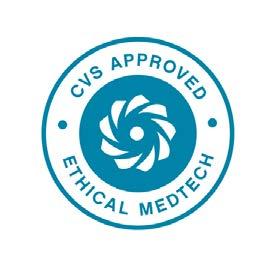


said Tom Mihaljevic, M.D., Cleveland Clinic CEO and President, and holder of the Morton L. Mandel CEO Chair. “The work she has done and will continue on a broader scale shows our commitment to the communities we serve in Northeast Ohio and our other locations across the globe.”Mihaljevic added, “Vickie is the right person to develop and implement an overarching strategy that can be tailored to local neighborhoods to bring about meaningful change for our patients wherever they live.”
In addition to northeast Ohio, Cleveland Clinic has locations in southeast Florida, Las Vegas, Toronto, London and Abu Dhabi.
Cleveland Clinic has announced the appointment of Vickie Eaton Johnson as the global health system’s inaugural Chief Community Officer, effective from this month. In this role, she will develop and implement an overarching strategy that will be tailored for Cleveland Clinic’s global locations including those in Abu Dhabi, London, and Toronto alongside its American network.
Johnson joined Cleveland Clinic in 2014 as Senior Director of Government and Community Relations. In that role, she facilitated the development of a five-year community health strategic plan and coordinated community conversations with Cleveland Clinic’s CEO in neighborhoods surrounding the system’s main campus.
“Vickie has been at the forefront of several major Cleveland Clinic community initiatives,”
As Chief Community Officer, Vickie Eaton Johnson will be a member of the executive team and lead community strategy for the entire organization, including the development of collaborative relationships with community partners, healthcare professionals, government agencies and elected officials. “I am incredibly honored to serve Cleveland Clinic in this new role, and I look forward to expanding the support we offer to each of the communities we touch,” said Johnson. “With the support of our community partners and leaders, we can work together to bring meaningful change that will result in a healthier community for all.”
Prior to joining Cleveland Clinic, Johnson was executive director of the Fairfax Renaissance Development Corp. from 1997-2014. She also served in the City of Cleveland’s Department of Community Development.
Johnson earned a Bachelor's degree in Political Science from Baldwin Wallace College, and a master’s degree in public administration from Cleveland State University’s Maxine Goodman Levin College of Urban Affairs. Currently, she is pursuing a Ph.D. in Urban Studies and Public Affairs, also from Cleveland State. She expects to complete that degree later this year.

VICKIE JOHNSON WILL DEVELOP STRATEGIES TO BE TAILORED FOR ENHANCING THE HEALTH OF COMMUNITIES AT ITS FACILITIES IN ABU DHABI, LONDON, TORONTO AND ACROSS THE U.S.



Where some of the greatest advances in medicine are hard at work for you. The University of Chicago Medicine pioneers the kind of research that’s changing lives. It is home to the most advanced medical technology, and physicians who work at the forefront of their fields.


It is our mission to bring the forefront of medicine to the world through personalized international patient services and tailored global advisory and education programs.
Clinical Centers of Excellence
» Comprehensive Cancer Center
» Transplant Institute
» Heart & Vascular Center
» Neuroscience Center
» Digestive Diseases Center
» Orthopaedic Surgery
» Obstetrics & Gynecology
» Pediatrics
For more information, visit UChicagoMedicine.org/global
100 Nobel Laureates, including 12 in Physiology or Medicine

Magnet Recognition for Excellence in Nursing & Patient Care



One of only 22 acute-care facilities nationwide to receive “A” grade in patient safety from Leapfrog Group for 21 consecutive periods as of May 2022
Ranked nationally in multiple adult and children’s specialties by U.S. News & World Report

Two physicians with expertise in polycystic ovary syndrome and the growth of nodules on the thyroid gland gave lectures in the latest instalments of Weill Cornell Medicine-Qatar’s (WCM-Q) Grand Rounds series.

WCM-Q alumnus Dr. Tania Jaber, now a consultant endocrinologist at Hamad Medical Corporation, spoke about thyroid nodules, which are abnormal growths in the thyroid gland, located at the front of the neck. Thyroid nodules are relatively common and in the majority of cases are benign (noncancerous), explained Dr. Jaber. Nonetheless, anyone who notices a new growth or unusual lump in the neck (or any other part of the body) should always see a doctor to have the issue investigated professionally, she said. Dr. Jaber, who also holds the position of Assistant Professor of Clinical Medicine at WCM-Q, then described the diagnostic approach followed by physicians when investigating suspected thyroid nodules. Her lecture, titled ‘Thyroid Nodules: Which, When, What, and Then?’ explained the how to use ultrasound imaging to determine when to order a biopsy, and how to interpret thyroid cytology, which is the study of thyroid cells under a microscope, usually to discover whether the growth is malignant or not.
Dr. Jaber, who graduated from WCM-Q in 2011, said: “The most recent data from the

BOTH LECTURES WERE DELIVERED AS LIVE WEBINARS AND WERE ACCREDITED LOCALLY BY THE MINISTRY OF PUBLIC HEALTH’S DEPARTMENT OF HEALTHCARE PROFESSIONS ACCREDITATION SECTION AND INTERNATIONALLY BY THE ACCREDITATION COUNCIL FOR CONTINUING MEDICAL EDUCATION (ACCME).
United States for 2022 shows the incidence of thyroid cancer has been increasing over the past couple of decades but that we are finally starting to see the numbers plateau. However, what is interesting is that the mortality of thyroid has thankfully and fortunately remained stable and remained low. So, although we are diagnosing more thyroid cancer, there has not been an increase in mortality in absolute terms.”
In a separate lecture, Dr. Caitlin Huckell, Co-Director of The Obstetrics and Gynecology Clerkship at WCM-Q, gave a definition of polycystic ovary syndrome (PCOS) and described the scope of the condition, which is the most common endocrine abnormality in women of reproductive age, affecting around one in ten. Dr. Huckell also gave a comparison of the variable ways polycystic ovary syndrome (PCOS) can present throughout a woman's life, explained how to appraise different treatment modalities for PCOS management, and discussed patient outcomes when PCOS is not treated.
Both lectures were delivered as live webinars and were accredited locally by the Ministry of Public Health’s Department of Healthcare Professions Accreditation Section and internationally by the Accreditation Council for Continuing Medical Education (ACCME).



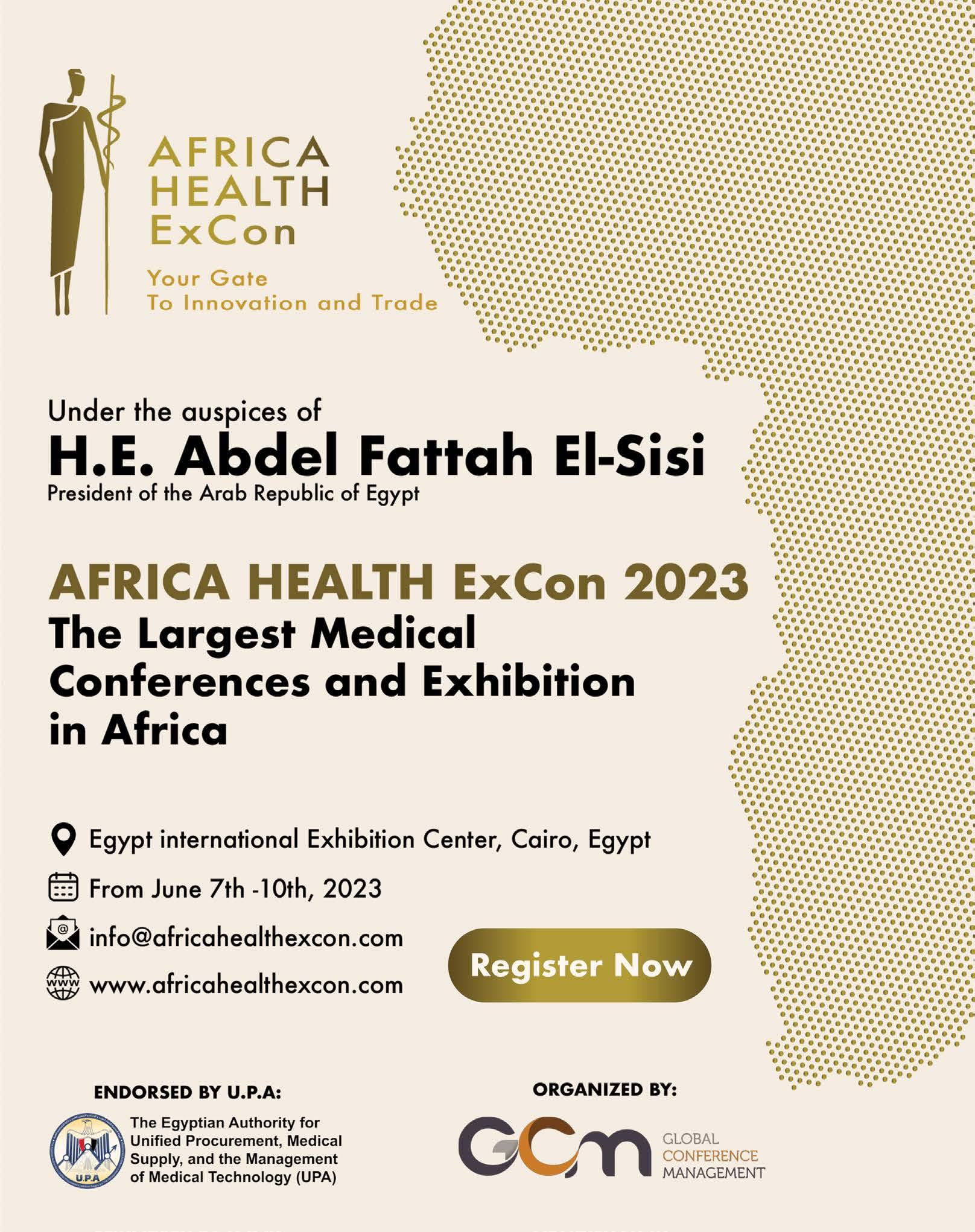
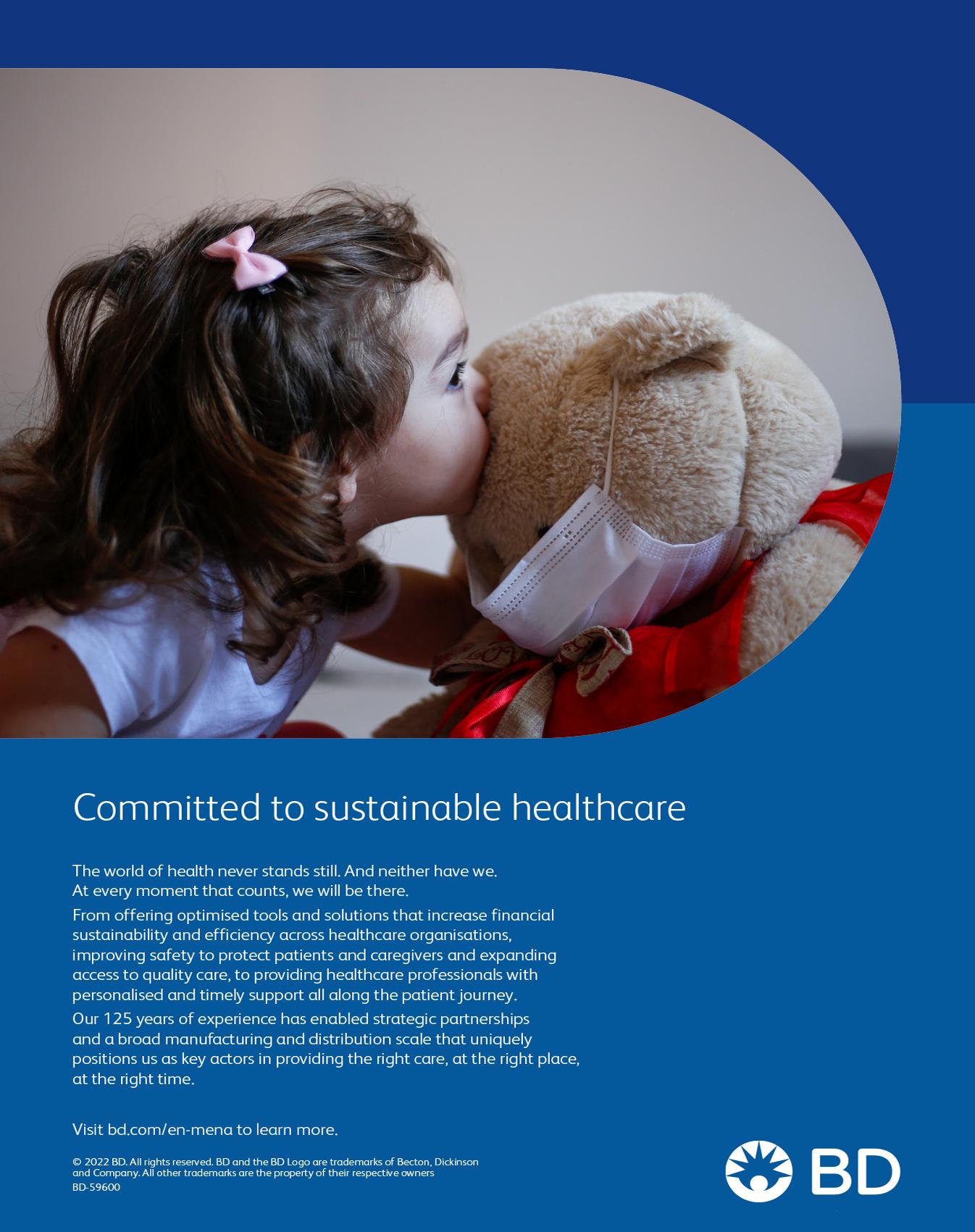

Robotic surgery has proven to be highly efficient in operating rooms and has changed the concept of surgical work.

Massive and traditional surgeries have transformed into surgeries with minimal surgical intervention. The experienced surgeon is the only one who operates the robot through a surgical control unit, using 3D cameras to provide high-resolution images. The surgeon controls the robot's four arms to access the surgical area they want to reach. These arms have the highest degree of movement, which is better than the human hand.
The robot and computer can provide an excellent service to the surgeon. After computerized tomography imaging, the location of the tumor can be accurately determined, and the distance of adjacent organs can be measured. Additionally, a 3D image can be formed to assist the doctor during the surgical procedure.
The surgeon directs the robot through the control unit in front of a computer screen in the designated area to move the robot's arms. It is more accurate to say that the movements that the surgeon wants to perform are translated by the robot and executed on the patient's body.
The doctor inserts a small robotic arm equipped with a camera connected to a computer screen through a small opening no more than a few centimeters into the patient's abdomen. This arm navigates through the patient's intestines as the doctor sees fit based on what they see on the computer screen, magnified tens of times larger.
After robots have entered this field through wider doors, bone surgeries are witnessing unprecedented achievements today. Many companies specializing in the medical field have developed surgical robots that help in bone surgeries during knee, hip, shoulder, and spine surgeries and achieve satisfactory results for
both the patient and the surgeon.
Joint replacement surgeries with robots have become one of the traditional operations performed worldwide, provided that an experienced surgeon with extensive experience in his field is present. Furthermore, robot-assisted bone surgeries have begun to prove their effectiveness and their significant role in improving the efficiency of spine surgery, which is one of the most precise medical operations, as well as many other surgeries.
The robotic arm enables the surgeon to perform precise operations efficiently, especially spine, joint, and other bone surgeries, which contributes to reducing the suffering of patients, shortening the recovery period after the process, and reducing bleeding among other advantages.
Joint replacement surgeries using robot technology in surgeries for repairing joints and tendons have contributed to achieving many positive results in treating patients with knee joint replacement.
Gynecological surgeries have benefited the most from surgical advancements using robots, as around 90% to 95% of gynecological surgeries can be performed using robots. Some of the most common gynecological surgeries include:
• Myomectomy: This is the most commonly used surgery to treat uterine fibroids. Instead of removing the uterus, the fibroid can be removed, which is what most women want, especially those still of childbearing age. Robotic surgery, in this case, is the optimal solution to get rid of fibroids and preserve a healthy uterus simultaneously.
• Hysterectomy: Today, the uterus can be removed through laparoscopic surgery, which requires no more than 3 to 4 incisions, each no larger than half a centimeter.
ONE OF THE SURGICAL PROCEDURES THAT HAS WITNESSED SIGNIFICANT PROGRESS IN ROBOTIC SURGERY IS PROSTATECTOMY, WHERE IT IS POSSIBLE TO USE THE ROBOT TO REMOVE THE PROSTATE AFFECTED BY CANCER AND THE LYMPH NODES IN THE PELVIS.

• Repair of congenital uterine defects: With this modern technique, the surgeon can reduce a double uterus to a single one without opening the abdomen, which means that the patient can conceive without the risk of abortion associated with most of these cases.
• Repair of uterine prolapse: When the uterus or vagina protrudes, it can be brought back to its natural position, and robotic surgery can easily visualize the areas behind the uterus and at the front of the spinal column without any defects.
• Fallopian tube surgeries: One of the most successful surgeries that can be performed with a laparoscope is the restoration of blocked tubes to their original state.
• Removal of adhesions in the ovaries, tubes, and pelvis: Adhesions in the ovaries and tubes can cause pain in the pelvis and lower abdomen and during menstruation. These adhesions can be easily removed using robots.
• Re-opening tied tubes: Some women choose to link their tubes to prevent pregnancy, and when they want to conceive, they can easily reopen the tubes with the help of a robot.
• Non-uterine pregnancy operations.
• Removal of blood clots and treatment of displaced uterine lining
• Operations for reproductive system cancer.
Female surgeons can use the robot to remove one or both ovaries and treat advanced-stage ovarian, uterine, and other reproductive system cancers.
One of the surgical procedures that has witnessed significant progress in robotic surgery is prostatectomy, where it is possible to use the robot to remove the prostate affected by cancer and the lymph nodes in the pelvis. Prostatectomy using the robot preserves the nerves surrounding it, responsible for the process of erection with extreme precision, as well as
reconnecting the bladder to the urethra after the prostate is removed with extreme accuracy and ease, reducing the surgical complications that occur after performing prostatectomy with open surgery, and also enabling the patient to regain control over urination quickly after this type of robotic surgery.
Prostate cancer removal is considered one of the most precise procedures in urological surgery and is different from the usual prostatectomy done to treat benign prostate enlargement. Traditionally, this procedure has been performed by opening the abdomen and later by laparoscopic surgery. However, the difficulty of this procedure and its frequent complications have hindered its widespread use, except among specialists in this field.
JOINT REPLACEMENT SURGERIES USING ROBOT TECHNOLOGY IN SURGERIES FOR REPAIRING JOINTS AND TENDONS HAVE CONTRIBUTED TO ACHIEVING MANY POSITIVE RESULTS IN TREATING PATIENTS WITH KNEE JOINT REPLACEMENT

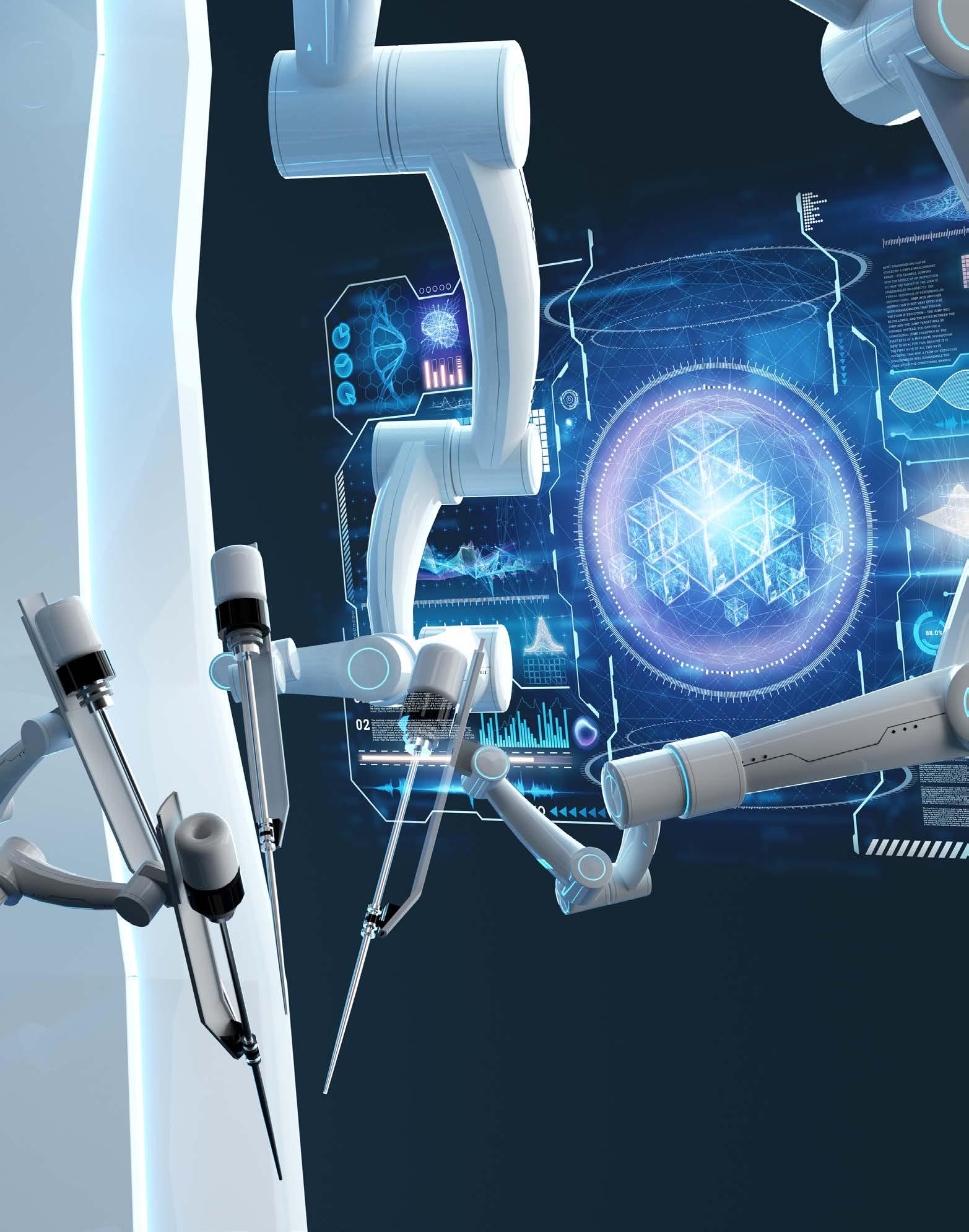


Robotic radical prostatectomy utilizes the latest technology to treat PCa. It’s also been used in kidney, bladder and testicular cancer surgeries. In Acibadem Group, we have several Da-Vinci robotic systems and successfully perfom all robotic cases. This modality offers full robotic approach and there is no incision and no open surgery. Robotic radical prostatectomy is the gold standard treatment and a minimally invasive surgical treatment for organ-confined prostate cancer.
The “daVinci” Robotic System is a computer-based, minimally invasive robotic system, which consists of 3 main parts as surgical equipment that enables the operation to be performed with the least possible damage to the body. Robotic urological surgeries are not only confined to cancer treatment. Recently, renal transplantations are successfully completed by robotic Da-Vinci system. Other surgeries performed by robotic surgeries are simple prostatectomy, bladder stone diseases, ureteral and renal junction stenosis and pelvic organ prolapse.
ROBOTIC RADICAL PROSTATECTOMY UTILIZES THE LATEST TECHNOLOGY TO TREAT PCA. IT’S ALSO BEEN USED IN KIDNEY, BLADDER AND TESTICULAR CANCER SURGERIES. IN ACIBADEM GROUP, WE HAVE SEVERAL DA-VINCI ROBOTIC SYSTEMS AND SUCCESSFULLY PERFOM ALL ROBOTIC CASES. THIS MODALITY OFFERS FULL ROBOTIC APPROACH AND THERE IS NO INCISION AND NO OPEN SURGERY.
Prostate cancer became the most common malignancy in men and the second-leading cause of cancer death among male population. The only risks of developing prostate cancer (Pca) are being male gender and increased age. It has been much more commonly diagnosed after introduction of prostate specific antigen (PSA) test which led to widespread screening. PSA screening has been associated with increased diagnosis of Pca and a shift toward diagnosis of earlier-stage disease, concomitantly increasing surgical treatment and cure of the disease.
“Localized and/or locally advanced prostate cancer patients can safely be treated by radiation, minimally invasive methods, focal therapies and radical prostatectomy," said Professor Rahmi Onur, Urologist specialized in Urinary Incontinence and Bladder Health, Diagnosis and Treatment of Prostate Diseases in Acıbadem Ataşehir Hospital, Istanbul.
Pelvic organ prolapse is another urogynecology problem that occurs after multiple births, difficult births, interventional births, relaxation of the muscles that suspend the bladder (pelvic floor muscles). It commonly occurs after menopause or after removal of the uterus (hysterectomy) and some other gynecological surgeries. Mild prolapse cases can be treated by pelvic floor exercises or pessary use-
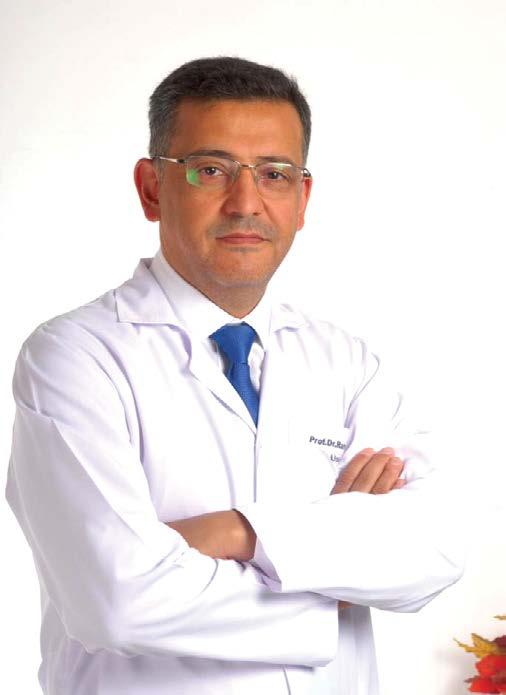
however, severe uterine, vault or bladder prolapses bring severe symptoms and they need to be surgically treated. Thanks to the robotic technology, we can safely and successfully treat pelvic prolapses by robotic surgery too. In this method, uterine or vault prolapse is treated by robotic sacrocolpopexy or robotic hysteropexy. This involves mesh placement to the tip of vault and suturing this to the scral promontroium. It has more that 95% success rates in our hands. We perform the surgery as same-day or 1-day hospitalization surgery and use no drains or catheters. This has done totally through abdomen and with no incision.
Lower urinary tract symptoms associated with voiding problems may arise from many different pathologies affecting pelvic organs, pelvic floor or both. Voiding dysfunction is a broad class of bladder conditions that ranges from urinary incontinence (inability to store urine) to urinary retention (inability to empty urine). There may be other bothersome symptoms, too.
Bladder problems are troublesome and decreases patient’s quality of life. Patient may leak small or large amounts of urine, or may not be able to empty her/his bladder completely. These problems can interfere with the individual's lifestyle and make simple daily activities and social life difficult.
Most common symptoms of voiding dysfunction are:
• Urinary Urge Incontinence
• Urgency/Frequency
• Urinary Retention
• Fecal Incontinence
• Bladder pain/Pelvic pain
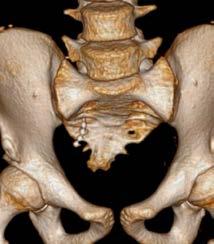
Voiding dysfunctions may be due to neurogenic problems bladder or idiopathic in origin. In the etiology, pelvic floor dysfunction and related events can cause an inappropriate “barrage” of signals that may cause a “miscommunication”
between the pelvic floor and brain, resulting in these symptoms.
Sacral nerve root in the anterior surface of the bone is the key point for stimulation and for voiding physiology. Sacral nerves control:

• Bladder
• Bowel
• Urinary and Anal Sphincters
• Pelvic Floor Muscles
Sacral neuromodulation is a unique treatment modality with an implanted battery system that helps to coordinate: bladder, sphincter and pelvic floor. It also modulates reflex and neural activities.

This treatment electrically stimulates the sacral nerves that carry signals between the bladder and the brain. It is an implantable, MR safe and rechargeable system implanted in the sacral bone and upper buttock during a minimally invasive outpatient procedure. With this externally programmable solution, patient can start, stop and adjust therapy.
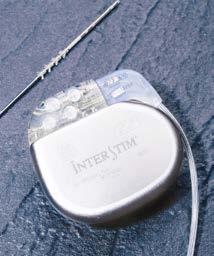
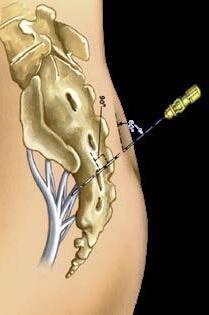
There are no contraindications for sacral stimulation. It’s commonly indicated in drug and behavioural treatment resistant OAB, idiopathic urinary retention, chronic pain, and fecal incontinence. Recently, it has been used in neurogenic bladder and spina bifida cases, too.


Today, we celebrate the 200th issue of "The Arab Hospital" magazine. Since its early years, the publication has played a major role in strengthening relationships between media and health, the hospital and the community, the doctor and the patient, medical production companies and their consumers, and between universities, institutes, researchers, and all those working in the health world.


Over the years, through 200 issues, this relationship was not only business-oriented but also carried a strong medical and informative mission amidst a rapidly evolving, highly competent, and ambitious field. It was an honor for "The Arab Hospital" magazine to keep pace with this development and contribute to its progress. The magazine's main goal is to promote the individual's physical and emotional well-being and public health.
The Publisher and General Manager of "The Arab Hospital Magazine," Mr. Simon Chammas, talks about the beginnings, milestones, and successes of this entire journey that became a dream come true, embodied in the two-hundred issues of the magazine.
Chammas says, "The idea of establishing a specialized medical magazine that deals with the healthcare industry and contributes to the communication of medical information started when I realized that there was a need in the market for a publication that covers all aspects of healthcare in the Middle East region. There were some articles here and there, but they did not keep up with the rapid growth of the medical sector in the region.
He further states, "The existence of a large number of social, economic, political and technology magazines and the lack of medical publications covering the medical field, along with the activities and news of ministries of health in the Middle East, encouraged me to
THE IDEA BEHIND THE NAME "THE ARAB HOSPITAL" CAME AFTER TEAMWORK AND BRAINSTORMING. WHEN WE TALK ABOUT THE HEALTH SECTOR, HOSPITALS ARE KEY; THEY MATTER TO PEOPLE AND OFTEN MARK CENTRAL POINTS IN THEIR LIVES. AND BECAUSE OUR MAIN FOCUS AND INTEREST IS THE ARAB WORLD, WE CAME UP WITH THE NAME WHICH BECAME THE TITLE OF A LEADING HEALTHCARE MAGAZINE.
plan and pursue this project. We started as a small team and worked with healthcare partners in the region to become a leading source of healthcare business and medical news. We now cover all healthcare trends and healthcare events in the region. Our mission is to keep up with the latest developments in healthcare, hospital news and activities, along with success stories of professionals in the field who are driving transformation with their innovative thinking.
Chammas adds, "The idea behind the name "The Arab Hospital" came after teamwork and brainstorming. When we talk about the health sector, hospitals are key; they matter to people and often mark central points in their lives. And because our main focus and interest is the Arab world, we came up with the name which became the title of a leading healthcare magazine."
He continues, "In 2006, actions were taken upon this idea and our first issue was launched. Our main target is to provide people and empower them with health information to make effective and informed decisions. In addition, we help healthcare institutions to introduce their latest technologies and skills
and healthcare leaders to disseminate their ideas and achievements."
Our communication strategy is to inform, influence and motivate individuals, institutions, and communities in making effective decisions to improve health and enhance the quality of life. Chammas explains, "Since the beginning, we were aware of the importance of our role in health communication; we were committed to being a reliable source in healthcare and providing our readers and followers with the latest news. We wanted our readers to understand the health sector comprehensively, and we believed that 'The Arab Hospital' succeeded in its mission."
In this regard, Chammas says, "The initial goal was to become a relevant and accurate source of healthcare news in the region, we started sponsoring top health and medical seminars, conferences and exhibitions, and we became media partners to leading healthcare and medical conference & congress organizers worldwide". He adds, "In 2009, "The Arab Hospital Magazine" took another step on the expansion level. Due to the increasing number of foreign-language-speaking readers, we decided to publish "Hospitals Magazine" in English, which covers almost the same topics, with some distinctions to meet the aspirations of new international markets, in addition to the Arab world."
The result of our hard work led to strong relationships with our advertisers, who became partners and friends, close connections we take pride in. Our media platform was considered their initial communication tool to deliver their latest achievements, expansions and success stories.
Chammas says, "With digital transformation, it was clear that we have to bridge between print and digital, even though we believe that print
THE RESULT OF OUR HARD WORK LED TO STRONG RELATIONSHIPS WITH OUR ADVERTISERS, WHO BECAME PARTNERS AND FRIENDS, CLOSE CONNECTIONS WE TAKE PRIDE IN. OUR MEDIA PLATFORM WAS CONSIDERED THEIR INITIAL COMMUNICATION TOOL TO DELIVER THEIR LATEST ACHIEVEMENTS, EXPANSIONS AND SUCCESS STORIES
still has advantages over digital. Therefore, to stay at the forefront of health communication, we launched our websites and digital applications and engaged in all social media platforms to reach the largest possible number of readers."
He adds, "In addition to that, we started our own YouTube channel where we release filmed interviews with doctors, experts and leaders in the health sector which became more in demand amongst our followers."
The Publisher and General Manager of "Arab Hospital", Simon Chammas, does not fail to highlight the role and contribution of the team, which he describes as "One of the secrets to success." He continues, "Besides the teamwork, there is also the family atmosphere, which distinguishes us from most regional institutions. Since 2006, we have been working with utmost efficiency and professionalism, yet the concept of regular attendance or requesting leave is not part of our daily routine. Everyone works with the same spirit and responsibility as if they are the business owner. This, of course, does not mean the absence of precision and commitment, which we maintain at every level of the job."
He points out that "During the coronavirus crisis, the change to remote work became a must, however, we have been doing that since 2006, and this allowed us to adapt to this change easily, maintaining the efficiency and hard work our team promises to offer."
On this occasion, Chammas promised that "The Arab Hospital Magazine" shall remain a trustworthy source for its readers and an ambassador to the healthcare sector. He finally expressed gratitude to everyone who participated in this success and said: "We will pursue our purpose, mission and values, and we will be honoring health pioneers in appreciation of their successes in this sector and their contributions to healthcare."

Atwo-day faculty development program codirected by Weill Cornell Medicine-Qatar (WCM-Q) and the US-based Accreditation Council for Graduate Medical Education provides highly effective tools for enhancing the performance of medical learners by optimizing assessment and feedback processes.

Dr. Thurayya Arayssi, Vice Dean for Academic and Curricular Affairs at WCM-Q, spoke to "Hospitals" magazine to explain the importance of this approach. “I don’t think it’s an overstatement to say that optimized assessment and feedback is probably the most powerful tool we have as medical educators to boost overall healthcare outcomes for patients,” said Dr. Arayssi, one of the co-directors of the workshop. “What I mean by that is that very high-quality assessment and feedback can turn a good learning experience into an excellent one because feedback, if done well, provides a real opportunity for growth.”
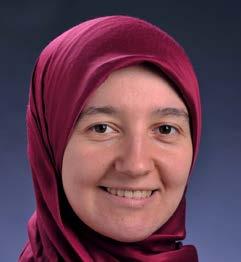

The workshop, developed by WCMQ’s Division of Continuing Professional Development, is directed by Dr. Arayssi and Dr. Eric Holmboe, Chief, Research, Milestones Development and Evaluation Officer at the ACGME, who are both speakers on the program. First offered in 2019, the workshop has proven extremely popular with medical educators in Qatar and the wider world, with healthcare professionals from seven different countries participating in each instalment, on average. The next instalment of the program will take place on October 26-27, 2023.
The other speakers are Deema Al-Sheikhly, director of medical education and continuing professional development, and lecturer of education in medicine; Dr. Sumeja Zahirovic, assistant professor of medicine; Dr. Amine Rakab, assistant professor of clinical medicine and assistant dean for clinical learning; Dr. Mai Mahmoud, assistant dean for faculty affairs and
How effective assessment of medical learners can dramatically improve the quality and safety of patient careDr. Sumeja Zahirovic
associate professor of teaching in medicine; and Dr. Amal Khidir, associate professor of pediatrics, all of WCM-Q. Dr. Sandra A. Moutsios, director of the internal medicine-pediatrics residency program and assistant professor of internal medicine at Vanderbilt University Medical Center (VMUC) in the US will also be speaking.

The workshop will provide a background theory of competency-based medical education, plus assessment and feedback tools, key strategies for identifying and remediating a struggling learner, and specific techniques to apply to improve direct observation skills. Attendees will have the opportunity to work in small groups to complete short practical exercises to apply the theories they have learned.
Dr. Sumeja Zahirovic said: “This model of assessment recommends adequate training of the assessor as one of the top priorities to ensure accuracy and reproducibility. Learners benefit a great deal from very rigorous and targeted assessment and feedback that is delivered in a collaborative rather than a judgmental manner.”
The workshop provides guidance on how to develop a collaborative feedback approach.
Deema Al-Sheikhly said: “It is important for faculty to have a shared mental model of expected learner behavior and expected level of performance to ensure the right assessment at the right time. Additionally, it is critical to utilize multiple methods, multiple assessors and assessment tools that are valid, reliable and fit for purpose.”

Dr. Amal Khidir added: “This workshop helps faculty to both design effective learning activities and to provide effective and specific feedback to learners. It highlights the importance of normalizing the remediation, considering the learner’s reflections, and co-producing a remediation plan with the learner. It is also important to follow up and sustain that progress.”
The workshop also uses sessions with standardized medical residents – these are medical professionals who are trained to
play the role of learners for the purpose of training faculty members. Some sessions also involve standardized residents interacting with standardized patients, who are non-medical professionals trained to play the role of patients. The attendees have the chance to observe the standardized residents taking a medical history and performing an examination of the standardized patient. They then assess the performance of the standardized resident and provide feedback to them.
Dr. Amine Rakab said: “The workshop utilizes a very systematic and intentional approach that maximizes the effectiveness of learning opportunities, which we believe ultimately translates into better learning outcomes and, therefore, more accomplished physicians and, most importantly, better healthcare outcomes for patients.”

Dr. Mai Mahmoud added: “The workshop has been carefully designed to help faculty very quickly acquire the advanced skills and knowledge required to make effective assessments and give targeted, actionable feedback to learners that helps them enhance their mastery of a given skill or task.”
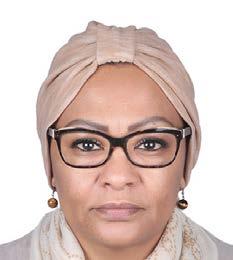
Commenting on her experience after completing a previous installment of the workshop, Dr. Farah Jaber, Medical Chief Resident, Internal Medicine Department, AUBMC, said: “I would like to thank the organizers and speakers for arranging this workshop and providing us with the knowledge and training needed to constantly improve. It is a great honor to be part of this learning community.”
The workshop, titled ‘Assessment in Competency Based Medical Education: A Faculty Development Program,’ is accredited locally by the Department of Healthcare Professions (DHP) of the Ministry of Public Health (MoPH) and internationally by the Accreditation Council for Continuing Medical Education (ACCME).
Travel medicine focuses on the health of the traveller by giving him the necessary guidance and advice that he should follow during his travel. “Hospitals” magazine had the privilege to meet with Dr Gordon Bland, Family Medicine Consultant at Clemenceau Medical Center, Dubai, to talk about Travel Medicine Clinic and the importance of pre-travel consultation.
How can we identify travel medicine? Travel medicine is a term that describes medical care and advice provided to people who are preparing to embark on international travel. It involves the provision of specific medical advice, preventative care, travel medications, and vaccinations prior to travel.
What is the role of Travel Medicine Clinic?
Why should we visit it before traveling?
A Travel Medicine Clinic can review your travel medical needs and provide pre-travel medical care based on your current health status and your intended destinations.
Some destinations have mandatory vaccination requirements, while others may have recommended vaccinations or require preventative medication. The goal of your visit is to get the best advice and preparation for your trip. Being prepared can help to prevent illness interrupting your travel plans.
What is the importance of pre-travel consultation and evaluation?

Travel Medicine takes a strong preventative approach to make sure you are well protected and safe during your trip. Travel Medicine advice can change based on your destinations, the season of travel, recent regional health issues, and your current health status. Having a pretravel consultation will make sure that you get personalised and up-to-date travel advice.
What Does a Travel Medicine Specialist Do?
A Travel Medicine Specialist can provide you with medical advice, travel medication, and can discuss and provide pre-travel vaccinations. Advice and care are provided with attention to your current health and travel needs.The goal of Travel Medicine is to keep you safe, protected and best prepared for your trip.
What vaccinations should be done to travel overseas? Are there travel destinations that have different vaccination?
Pre-travel vaccinations are an important consideration. Some destinations have mandatory vaccination requirements. You may be refused entry to a country, or refused permission to re-enter your country of origin, if these requirements are not met. Some
A TRAVEL MEDICINE SPECIALIST CAN PROVIDE YOU WITH MEDICAL ADVICE, TRAVEL MEDICATION, AND CAN DISCUSS AND PROVIDE PRE-TRAVEL VACCINATIONS. ADVICE AND CARE ARE PROVIDED WITH ATTENTION TO YOUR CURRENT HEALTH AND TRAVEL NEEDS. THE GOAL OF TRAVEL MEDICINE IS TO KEEP YOU SAFE, PROTECTED AND BEST PREPARED FOR YOUR TRIP.
"The goal of Travel Medicine is to keep you safe during trips"
Dr. Gordon Bland
destinations have recommended vaccinations, and these recommendations can vary depending on the season of the travel.
Important travel vaccinations include vaccinations for Yellow fever, Typhoid, Hepatitis, Meningitis, and Polio.
Travel vaccination advice changes over time and the recommendations or requirements may be different to information you obtain from previous travel, the internet, or from friends and family. Your Travel Medicine Specialist can make sure you get the most up-to-date information.
What are the steps that should be done for a healthy trip?
Planning a holiday can be fun and exciting. I recommend considering the health aspects of your trip early in the planning stages. Meeting with a Travel Medicine Specialist can be particularly important if your travel plans include adventurous, exotic or remote destinations. Some vaccinations need multiple doses to be effective and this process can take a few weeks or even months. Consider a consultation with a Travel Medicine Specialist early to make sure you have the best options and advice for your travel needs.
I also recommend thinking carefully about your own health needs. You should check that you have enough of your regular medication to cover your time away. You may also need to check that you are legally permitted to bring any regular medication with you on your trip.It is also important to consider travel health insurance to cover unexpected health issues. Becoming unwell while traveling, or being involved in an accident, can be very unpleasant and expensive.
For more information visit our page: https://cmcdubai.ae/services/familymedicine/

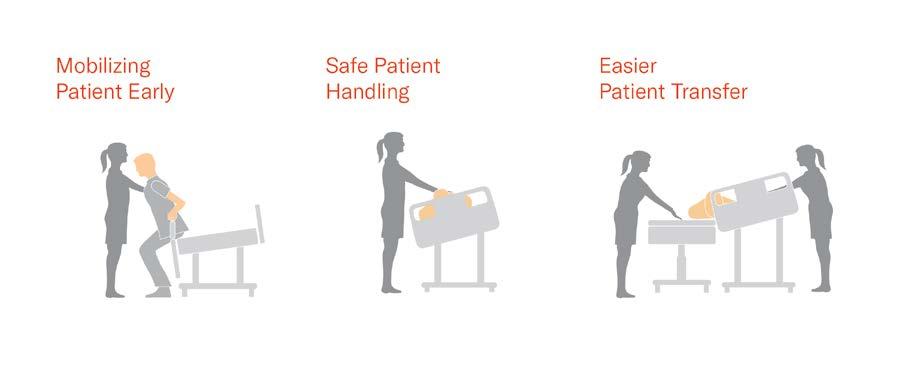
While electrically adjustable beds are fundamental equipment for patient rooms, in both acute and long-term care, medical beds with a lateral tilt have a special status. We can state, unfortunately. Because their functionality is dedicated to easing the daily work of nurses and many activities of the daily nursing routine. Thanks to the newly launched Essenza hospital bed, lateral tilt is turning into a new gold standard in acute care that delivers premium ergonomics for caregivers.

Did you know, that healthcare and nursing are among the most dangerous professions? In addition to infections and stress, health and care workers are largely affected by disorders of the spine and musculoskeletal system – they suffer from back injuries, blockages, and deformations of the spine, i.e. long-term and difficult-to-treat diseases, often with permanent consequences. Statistics confirmed, 47% of caregivers reported back pain.
On a bed with a lateral tilt, the bed surface rotates +/- 15° to the sides. This controlled movement of the bed literally turns the patient from a supine position to a side position. The nurse only holds the patient and provides him with support. Empirical measurement confirmed that the lateral tilt reduces the effort required when turning the patient by 67%. Less demanding patient positioning can be used in a wide range of daily nursing activities, such as positioning patients with pressure injuries, hygiene, skincare, making the bed, or nursing. For ergonomic work, foot pedals are available, thanks to which
ON A BED WITH A LATERAL TILT, THE BED SURFACE ROTATES +/- 15° TO THE SIDES. THIS CONTROLLED MOVEMENT OF THE BED LITERALLY TURNS THE PATIENT FROM A SUPINE POSITION TO A SIDE POSITION.
the nurse has free hands and can fully devote herself to the patient and nursing activities. Support and comfort for the patient will be provided by special pillows, safety is ensured by durable sides, the construction of which is prepared for heavy loads. A great benefit is a lateral tilt in the prevention of pressure injuries, as the staff can position the patient more often with less effort.
A separate chapter on the use of lateral tilt is the support of verticalization and mobilization. Early mobilization is supported in combination with other functions of LINET beds, such as the unique mobilization handle, integrated bed height control, and an ergonomic handle on the side rail. By tilting the bed surface, it helps the patient to move away from the bed. Mobilization support may help to prevent an adverse event such as orthostatic hypotension or patient falls and influence the length of hospital stay.
Another frequent use of lateral tilt is the transfer of immobile patients from a bed to a stretcher. This procedure is rated as demanding and requires a large number of personnel. By using a slight lateral tilt of the bed, or with the support of a slide sheet, this activity can be made significantly easier.
The use of lateral tilt is universal in both acute and long-term care. LINET has therefore developed several types of beds with lateral tilt.
Now the new Essenza 300 bed series is coming to the market, which offers a model with a lateral tilt. In addition, there are beds of the highest category Multicare and Eleganza 5 for intensive care.
Turn a patient onto their side or move and change the bed with zero physical effort. For someone a fantasy from the realm of dreams, for LINET's team of clinical coaches a set of correctly performed simple actions that practically everyone can handle.

As a magic formula use the Moving&Handling, a term that refers to these practical habits for working with the patient.
Moving&Handling can be learned by anyone who works with a patient in bed. It's just a matter of doing the individual activities in the right way and experiencing these habits in the nursing routine. Moving&Handling courses are intended for nurses, medical assistants, physiotherapists, paramedics and other staff and are focused on new techniques for working with patients in the field of ergonomics.
In a simple way, you will learn useful rules for higher ergonomics at work, which fundamentally reduce effort, and expenditure of physical strength and are effective prevention against back pain and injuries. We work with specific tasks of the daily nursing routine and everything is based on interactivity and practical training. Contact us directly for a demo or training: mea@linet.com

THE USE OF LATERAL TILT IS UNIVERSAL IN BOTH ACUTE AND LONG-TERM CARE. LINET HAS THEREFORE DEVELOPED SEVERAL TYPES OF BEDS WITH LATERAL TILT. NOW THE NEW ESSENZA 300 BED SERIES IS COMING TO THE MARKET, WHICH OFFERS A MODEL WITH A LATERAL TILT.
Learn more about the new Essenza bed
Modern technology has helped provide safety for diabetes patients by alerting them when their blood sugar levels are imbalanced. This allows them to administer the appropriate insulin dose at the right time with extreme precision. International companies have put great emphasis on developing and producing devices that monitor blood sugar levels, are easy to use, are accurate at the same time to manage diabetes and warn patients of any changes without the need for finger pricking.
In light of technological advancements in all medical fields, companies have been able to develop tiny devices that monitor blood sugar levels throughout the day. Doctors focus on keeping blood sugar levels within normal ranges for as long as possible to avoid complications.
The importance of technology for diabetes patients lies in achieving better control over sugar levels, and reducing the occurrence of disease complications, which was not possible in the past. Additionally, technology has a positive impact on improving the quality of life for diabetes patients.
Thanks to advanced devices, diabetes patients can improve their quality of life, engage in daily activities, and increase the effectiveness of managing their condition.
• Helping patients control blood sugar levels.
• Avoiding complications of the disease.
• Flexible disease management.
• Improving patient quality of life.
A small sensor placed under the skin allows blood sugar levels to be seen through a smartphone, suitable for all ages. Thus, it can be said that modern technology has contributed to de-
feating diabetes and controlling it by predicting its increase or decrease with the help of continuous glucose monitoring devices.
These are highly accurate medical devices and technologies that protect diabetes patients and enable them to control and monitor their blood sugar levels 24/7. If blood sugar levels rise or fall, the device gives an immediate alert signal to the person so they can deal with their health situation promptly.
With these devices, patients can plan appropriate meals and balance their diet and physical activity to avoid sudden drops or spikes in blood sugar and sense any changes in their glucose levels before they occur, allowing for quick response and treatment.
As a result, patients are protected from the severe complications resulting from changes in blood sugar levels, which can affect all body parts. These devices contribute to improving the quality of life of diabetes patients through smart alerts and remote monitoring technology.
Studies have shown the role and importance of these devices in regulating both types of blood sugar, as they provide better control over blood sugar regularity through continuous monitoring of sugar readings and the ability to show changes in sugar levels throughout the day and night.
The basic standards relied upon by continuous glucose monitoring (CGM) devices are the percentage of blood sugar level readings throughout the day to determine whether it is low, high, or within a reasonable range. Experts have agreed that "time in range" is one of the measures for assessing the effectiveness of diabetes management, as it provides more actionable information than the A1C test alone. This measure can be read as a percentage that includes the average hours and minutes for each blood sugar level per day, depending on the patient's circumstances.
As for the importance of this technology for doctors, they have observed in recent years
THE IMPORTANCE OF TECHNOLOGY FOR DIABETES PATIENTS LIES IN ACHIEVING BETTER CONTROL OVER SUGAR LEVELS, AND REDUCING THE OCCURRENCE OF DISEASE COMPLICATIONS, WHICH WAS NOT POSSIBLE IN THE PAST. ADDITIONALLY, TECHNOLOGY HAS A POSITIVE IMPACT ON IMPROVING THE QUALITY OF LIFE FOR DIABETES PATIENTS

the importance of patients being fully aware not only of their current blood sugar readings but also their previous readings throughout the day, as well as the expected readings in the next minutes or hours. This helps doctors make more informed decisions and tailor their treatment plans to patients' needs.
Scientifically proven and from the experiences of diabetic patients and healthcare practitioners, there is a significant improvement in sugar levels alongside the patients' ability to manage diabetes with regular use of these technologies.
A small electronic device consists of an insulin reservoir and a thin plastic tube connected to a small needle that is inserted under the skin. The device continuously pumps insulin into the human body and is programmed by the treating physician to deliver the required amount of insulin the patient needs. The pumping rate also depends on the number of daily carbohydrates and sugars the patient consumes.
Insulin pumps are very suitable for diabetic patients, especially children, according to studies in this regard, which have confirmed an improvement in their quality of life compared to their peers who follow traditional methods in treating diabetes. Insulin pumps have also helped control blood sugar levels better, reduce the risk of hypoglycemia, especially at night, and assist in lowering cumulative blood sugar levels and preventing or delaying diabetes complications.
One of the advantages of the insulin pump is its ability to be pre-programmed and provide insulin as needed, which reduces cases of hypoglycemia or hyperglycemia, and over time helps reduce cumulative blood sugar levels. The pump also features accuracy in regulating blood sugar levels, providing the body with only what it needs. Thus, the patient has greater freedom in eating. It is also the latest means of continuously and regularly delivering insulin throughout the day, providing the patient with stability in blood sugar levels and allowing him to lead an everyday life and cope flexibly.
The developments in medical technology have contributed to the invention of this
alternative therapeutic solution, significantly reducing the risk of hypoglycemia while eliminating the need for patients to inject themselves throughout the day. It also provides a more remarkable ability to control blood sugar levels.
According to studies, using insulin pumps reduces severe blood sugar spikes or hypoglycemia episodes. In explaining how it works, the pump continuously delivers insulin to the body 24 hours a day in programmed doses by the treating physician, mimicking how the pancreas delivers typically insulin in a healthy person.
When a drop in blood sugar level below the acceptable level is observed, the pump automatically and temporarily stops delivering insulin for a period of up to two hours, which prevents the patient from the risk of severe hypoglycemia and its associated complications.
On the other hand, when the patient consumes their meal and the amount of carbohydrates is entered, the pump delivers insulin proportional to the amount of carbohydrates, and this is called mealtime bolus delivery.
STUDIES HAVE SHOWN THE ROLE AND IMPORTANCE OF THESE DEVICES IN REGULATING BOTH TYPES OF BLOOD SUGAR, AS THEY PROVIDE BETTER CONTROL OVER BLOOD SUGAR REGULARITY THROUGH CONTINUOUS MONITORING OF SUGAR READINGS AND THE ABILITY TO SHOW CHANGES IN SUGAR LEVELS THROUGHOUT THE DAY AND NIGHT.


Obesity treatment centers offer integrated solutions that include nutritional, behavioral, and exercise therapy, surgical options when necessary, and psychological support for patients. This is provided by multidisciplinary teams that specialize in obesity treatment and related complications.

Specialized obesity treatment centers aim to promote healthy living and reduce the risks associated with excessive weight linked to numerous chronic diseases. In response to this and the close relationship between obesity and many diseases, hospitals and healthcare institu-
tions worldwide have established centers focusing on treating obesity and managing weight.
However, the work of obesity treatment centers is no longer limited to just weight loss and obesity treatment. Instead, it is about maintaining the weight lost by the patient, as gradual weight loss and keeping the weight loss is better than rapid weight loss and then regaining it.
Many studies today focus on weight maintenance as the foundation of weight management rather than just focusing on losing kilograms. The goal of obesity treatment is not just weight
THE WORK OF OBESITY TREATMENT CENTERS IS NO LONGER LIMITED TO JUST WEIGHT LOSS AND OBESITY TREATMENT.
loss but also managing weight through essential lifestyle changes that the patient adopts as part of their daily routine, such as exercise, physical activity, and following a healthy eating pattern.

Experts agree that the most important solution for combating obesity and avoiding excessive weight is modifying one's daily lifestyle behaviors. This step is considered the cornerstone of obesity and weight management and requires a solid determination to follow a healthy lifestyle to lose weight and prevent diseases. It also requires support from the surrounding environment and psychological and emotional support to help individuals lose weight and stay committed to the necessary steps.
Obese patients can find in these centers an integrated team that includes obesity and internal medicine consultants, behavioral therapy specialists, nutritionists, and fitness trainers. They employ the latest internationally recognized methods and techniques to treat obesity and provide solutions and options that are tailored to individual medical cases within a comprehensive work program and a multidisciplinary therapeutic approach.
Obesity experts adopt a comprehensive approach to treating obesity, particularly severe obesity. In addition to endocrinologists and surgeons, these centers provide specialized doctors in psychological disorders and sports medicine for diagnosis and treatment. Everyone works as a team to identify individual medical and psychological causes of obesity, and weight loss programs are created with physical activity and psychological support.
The beginning is always to search for the causes of obesity. The specialized medical team conducts a clinical examination, listens to the patient's family history, and undergoes various laboratory tests, while a dietary, behavioral, and exercise program is tailored to the patient's condition. Weight loss programs, in their various forms, are implemented by making changes in eating habits and increasing physical activity. Proper treatment methods depend on the patient's level of obesity, as determined by their body mass index, as well as their overall health condition, and most importantly, their desire to
lose excess weight.
Some cases of obesity may require a specific type of surgery, depending on the patient's body mass index, age, and overall health condition. These surgeries are performed using the latest techniques in operating rooms designed specifically for this category of patients.
Following a suitable diet plan is what nutrition experts start with in those centers, as they aim to develop an appropriate nutrition plan based on the patient's age, health problems, height, weight, and other criteria. Experts agree that slow and steady weight loss over a long period is safer than rapid weight loss because it ensures the maintenance of lost weight. Unrealistic practices such as strict diets and radical changes in the diet should be avoided. The typical amount ranges from 1,200 to 1,500 calories for women and 1,500 to 1,800 for men.
Fast food should be avoided and replaced with healthy foods such as fruits, vegetables, whole grains, legumes, lean meats, dairy products, fish, and poultry. Food that contains a high percentage of nutrients should be chosen over high-calorie foods, and unsaturated fats, sugary foods, carbonated drinks, and processed foods should be avoided.
Exercise helps to reach the desired goal, especially when accompanied by a healthy diet plan, as it balances the number of calories we
SOME CASES OF OBESITY MAY REQUIRE A SPECIFIC TYPE OF SURGERY, DEPENDING ON THE PATIENT'S BODY MASS INDEX, AGE, AND OVERALL HEALTH CONDITION. THESE SURGERIES ARE PERFORMED USING THE LATEST TECHNIQUES IN OPERATING ROOMS DESIGNED SPECIFICALLY FOR THIS CATEGORY OF PATIENTS.
consume and the ones we burn. Therefore, to eliminate excess weight, the number of calories burned must exceed the number consumed. Since exercise involves burning calories, it is essential to its success.
To succeed in maintaining physical activity and weight control, some steps must be followed, which are among the services provided by those specialized centers.
A medical examination is carried out to ensure that exercise is safe for the individual, and the exercise program is gradually implemented, ranging from 3-5 times per week, and the training period ranges from 15-60 minutes. Experts recommend starting with low-intensity exercises, such as walking, and gradually increasing the intensity and duration of the training. Choosing an enjoyable activity that fits the individual's lifestyle is also essential.
Psychological support helps obese patients overcome these obstacles by learning healthy ways to reduce the frustration they experience. It also helps them understand how to monitor their diet and exercise routines, their timing, and how to deal with triggers that lead to overeating and manage extreme food cravings, especially after following a dietary regimen.
Obese patients need to realize that a healthy diet and exercise are new lifestyles and
behavioral changes in their daily lives that they must follow in a balanced way for the rest of their lives without feeling deprived. However, this behavior change may have psychological repercussions and frustration. Hence, an obese patient in such situations needs psychological support from mental health specialists and coaches to deal with such situations and to provide assistance on how to cope with behavioral and emotional problems associated with food consumption.
Cognitive-behavioral therapy has shown high effectiveness in reducing the psychological disorders that obese people suffer from while encouraging them to lose weight by enhancing their self-confidence. The aim is to radically change obese patient's life and turn their daily habits into healthy ones, including the quality and timing of food intake and exercise, and setting realistic weight loss goals so that they feel capable of achieving them gradually over time. Cognitive-behavioral therapy also includes supporting the surrounding environment and encouraging the patient to adopt healthy habits.
Cognitive-behavioral therapy helps people change their eating and exercise behaviors through a series of individual or group counseling sessions where behavioral therapy specialists deal with the psychological aspect of weight
AMONG THE TREATMENTS THAT HAVE BECOME POPULAR IN RECENT YEARS FOR TREATING OBESITY ARE SLIMMING INJECTIONS, WHICH PROVIDE AN IDEAL SOLUTION FOR MANY CASES OF EXTREME OBESITY THAT HAVE NOT RESPONDED TO ANY DIETARY OR WEIGHT LOSS MEDICATION, OR FOR THOSE WITH HEALTH RISKS THAT PREVENT THEM FROM UNDERGOING SURGERY.

management by helping the patient understand the thinking patterns, emotions, and behaviors that encourage them to eat and thus gain weight, as it is possible to eat without feeling hungry just because they are sad.
This type of obesity treatment relies on enhancing the patient's ability to develop their skills and confidence to change their lifestyle patterns and adhere to a healthy diet and exercise habits to lose weight and achieve long-term health benefits.
Among the treatments that have become popular in recent years for treating obesity are slimming injections, which provide an ideal solution for many cases of extreme obesity that have not responded to any dietary or weight loss medication, or for those with health risks that prevent them from undergoing surgery. However, these injections must be administered under the supervision of a treating physician who is the only one capable of determining the extent of the problem and the need for this type of injection.
This type of injection has shown accurate and effective results with minimal or no side effects when supervised by a physician. In addition, it is simple and easy compared to surgical weight loss methods, which may be scary for some people.
The concept behind the effectiveness of these injections is based on the secretion of a natural hormone within the body responsible for regulating appetite by activating certain areas in the brain responsible for feelings of satiety and hunger. This makes the person feel full and satisfied after consuming small amounts of food, resulting in a low-calorie intake and safe and healthy weight loss.
These injections are recommended for those with a body mass index (BMI) greater than 30 or greater than 27 with chronic diseases and severe health problems associated with obesity, such as diabetes or high blood pressure.
In this area, the US Food and Drug Administration recommends discontinuing injections if the person has not lost 4% of their weight after about sixteen weeks.
If a person's body mass index is above 40, diet and exercise do not provide any benefit, or if obesity causes a serious health problem, the best solution is often weight loss surgery after studying the case overall and making sure there are no health problems that prevent it. There are several weight loss surgeries, and the specialized surgeon determines the best type of surgery according to the case. These include gastric bypass surgery, gastric sleeve surgery, pancreatic and bile duct surgery, and duodenal switch surgery. The patient should realize that weight loss surgery does not eliminate the need for permanent healthy changes to their diet and exercise habits to help ensure the longterm success of obesity treatment surgeries.
Some types of procedures that may be used include:
• Gastric sleeve surgery involves removing a large portion of the stomach to reduce its size so the patient feels full after eating a small amount of food. In this case, the doctor will prescribe some vitamins due to the changes that will occur afterwards. Staples are used to close the gaps.
• Gastric banding, which involves placing a band around the upper part of the stomach to divide it into two parts with a narrow passage that allows a small amount of food to slowly reach the lower part of the stomach. This method does not affect calorie intake but only the amount of food that can be consumed.
• Bariatric bypass surgery involves creating a small pouch in the stomach and connecting it directly to the small intestine. After the stomach is rerouted, food passes through the small bag to the small intestine, bypassing most of the stomach and the first part of the small intestine. This procedure is not suitable for everyone and is only for those with a body mass index of 40 or more, considered extreme obesity, or a BMI of 35 or more with a serious health problem related to obesity.
THERE ARE SEVERAL WEIGHT LOSS SURGERIES, AND THE SPECIALIZED SURGEON DETERMINES THE BEST TYPE OF SURGERY ACCORDING TO THE CASE. THESE INCLUDE GASTRIC BYPASS SURGERY, GASTRIC SLEEVE SURGERY, PANCREATIC AND BILE DUCT SURGERY, AND DUODENAL SWITCH SURGERY
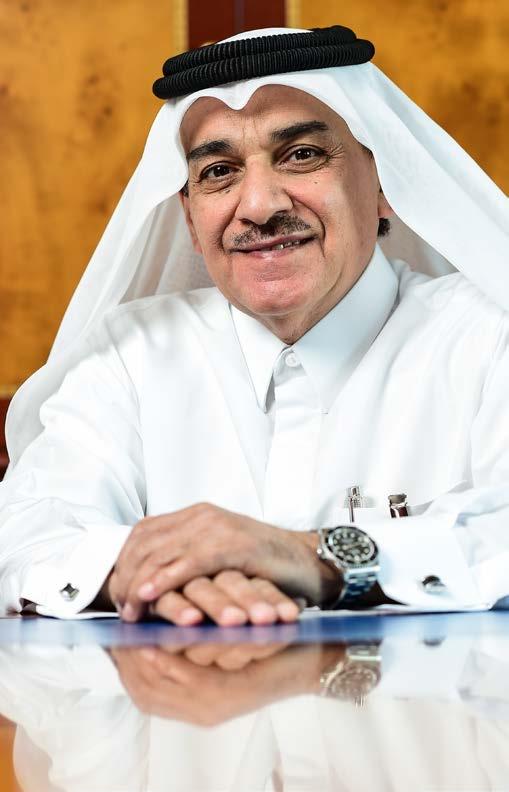
permanent. It helps obese patients begin their weight-loss journey by losing 10-15% of their average body weight in 16 weeks.
This weight-loss system is supported by advanced digital technology, which can be downloaded via the phone and comes with a watch that helps the patient monitor their healthy behaviors.
Dr. Abdulazim also explained that the patient is given a way to take in food after six hours, during which they can start taking small sips of fluids.
The patient should continue taking fluids for three days, then begin eating soft food while avoiding unnecessary physical activity in the first week. Gradually, the patient can start exercising when they adapt to the balloon.
Ten days after the balloon procedure, the patient should be able to start eating regularly under the supervision of a doctor and a nutrition specialist, who will provide recommendations for a healthy diet and nutritional supplements if necessary.
Recently, a modern weight-loss technique has been introduced in the General Surgery Department at Al-Ahli Hospital. This technique involves a capsule that is swallowed under the guidance of General Surgery doctors, without endoscopy or anesthesia. The stability of the balloon in the stomach is ensured using fast X-rays, and the procedure takes about 15 minutes from the visit to the outpatient clinic.
Dr. Abdulazim Abdulwahab, the head of the medical team at Al-Ahli Hospital, explained that this type of stomach balloon is safe and not
Dr. Abdulazim mentioned that after about 16 weeks (4 months), the activated balloon release valve opens automatically, allowing it to be discharged naturally through the digestive system without requiring any endoscopy.
He also stated that one of the remarkable features of this technique is that all obesity-related diseases significantly decrease, including hypertension, triglycerides, and blood glucose, all of which become within the normal range. Many patients who underwent this procedure reported that consuming small amounts of food for long periods after the ballooning phase was sufficient, and they could comply with a healthy diet plan, regularly engage in physical exercises, and maintain their weight.
THIS WEIGHTLOSS SYSTEM IS SUPPORTED BY ADVANCED DIGITAL TECHNOLOGY, WHICH CAN BE DOWNLOADED VIA THE PHONE AND COMES WITH A WATCH THAT HELPS THE PATIENT MONITOR THEIR HEALTHY BEHAVIORS.
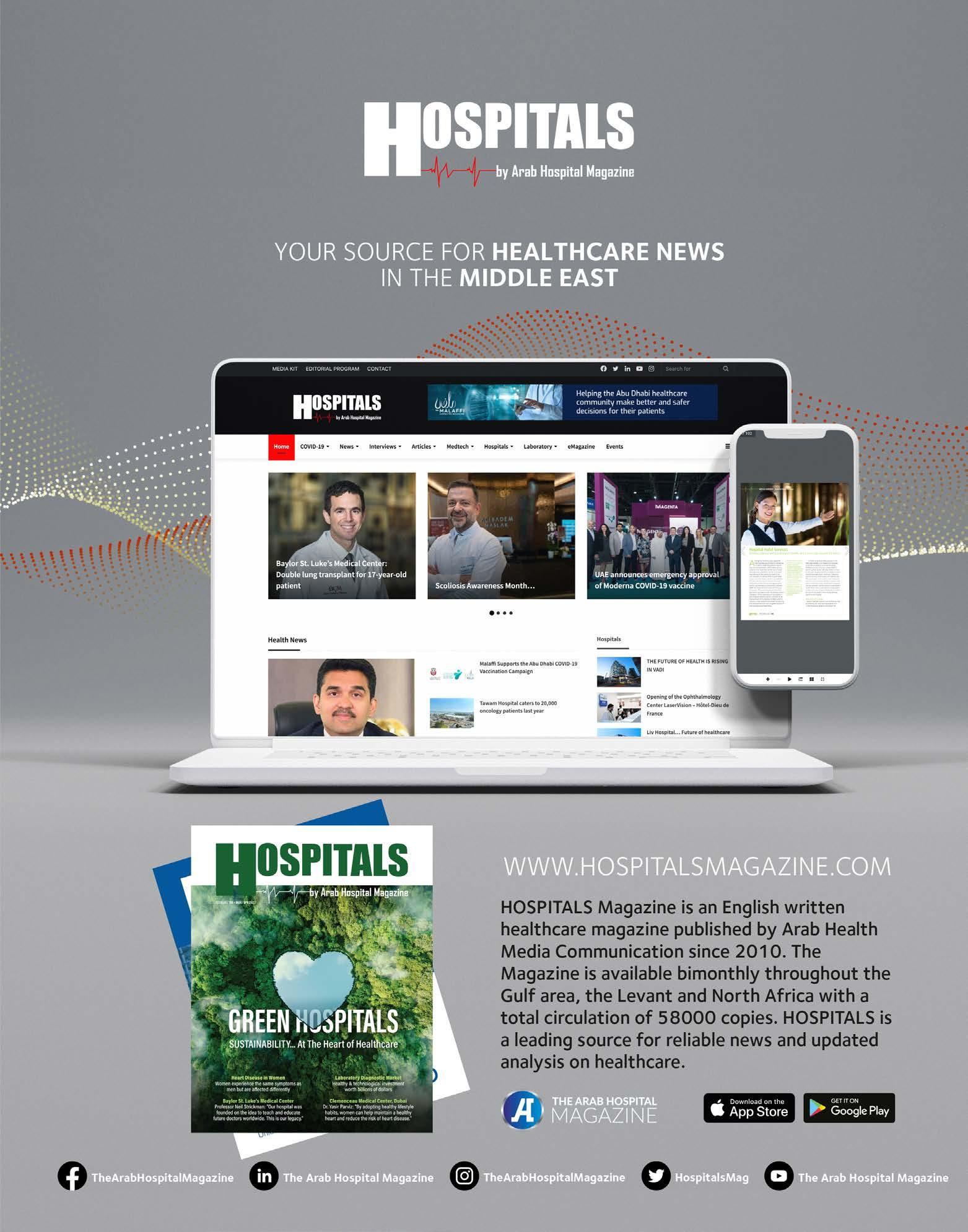

Growing up, Mark Anderson, MD, PhD, always thought that he’d be a lawyer. “Mostly because I didn’t want to feel like I was predestined to become a doctor,” he said, referencing the fact that his grandmother, grandfather and father were all physicians themselves. “But I always liked biology, and in the end, I really loved science, so I ended up going to medical school.”
It was thanks to an ex-girlfriend that he also pursued a doctoral degree; not wanting to leave her behind in his pursuit of medicine, he opted to defer medical school and instead start with a PhD program. “The relationship didn’t last, but the fascination with ion channels did,” Mark Anderson, now the Executive Vice President for Medical Affairs, Dean of the Division of the Biological Sciences (BSD) and Dean of the Pritzker School of Medicine, said with a laugh.
It was during his fellowship years at Stanford University that he first encountered the life-long subject of his study: Ca2+/calmodulin-dependent protein kinase II. Better known as CaMKII, the protein kinase is part of a variety of signaling cascades, and is perhaps best known for its role in the brain, where it is believed to play key roles in learning and memory. CaMKII is also critical to cardiomyocytes, the muscle cells of the heart, because it maintains calcium homeostasis and reuptake, supporting an optimal environment for heart activity.
Misregulation of CaMKII has been linked to arrhythmia in the heart, which drew Anderson’s clinical interest. “The protein seemed to be driving important electrophysiological phenotypes in the heart, which is what I was studying at the time,” he said. “My PhD thesis was focused on how the heart muscle contracts, and then when I went to medical school, the early electrophysiology labs looked a lot like my research labs. It felt so familiar, but it was also an emerging field,
with new options for modifying the electrical activity of the heart nonsurgically.”
During his decades-long research career, including time as the Director of the Department of Medicine, the William Osler Professor of Medicine and physician-in-chief of The Johns Hopkins Hospital and as chairman and department executive officer of internal medicine at the University of Iowa Carver College of Medicine, he has continued to focus on understanding the roles of CaMKII in heart health, and how targeting the protein might provide new therapeutic opportunities for conditions such as arrhythmia and myocardial ischemia-reperfusion injuries.
In the heart, activation of CaMKII mediates the phosphorylation of ion channels and other proteins that contribute to rapid changes in heart activity, including in heart rate and contractile performance of the heart muscles. This activation can be critical for rapid state changes, such as initiating a fight-or-flight response in the body, but overactivation can lead to impaired heart function and cell death, which can in turn lead to poor heart health outcomes.
One of Anderson’s seminal discoveries came in a 2008 study, in which his team outlined a new mechanism for the activation of CaMKII — oxidation of the amino acid methionine within the protein can sustain its activity even without the presence of calcium or calmodulin. As a result, CaMKII can be activated by angiotensin II (AngII)-induced oxidation, which in turn leads to apoptosis (cell death) in cardiomyocytes.
Additional research from his lab since then has shown that oxidized CaMKII can trigger atrial fibrillation, drawing a line between known risk factors and the condition, and demonstrating directly that patients with atrial fibrillation showed increased levels of oxidized CaMKII in their atria.
More recently, Anderson’s team has found evidence that this mechanism is a result of evo-
IN THE HEART, ACTIVATION OF CAMKII MEDIATES THE PHOSPHORYLATION OF ION CHANNELS AND OTHER PROTEINS THAT CONTRIBUTE TO RAPID CHANGES IN HEART ACTIVITY, INCLUDING IN HEART RATE AND CONTRACTILE PERFORMANCE OF THE HEART MUSCLES. THIS ACTIVATION CAN BE CRITICAL FOR RAPID STATE CHANGES, SUCH AS INITIATING A FIGHT-OR-FLIGHT RESPONSE IN THE BODY, BUT OVERACTIVATION CAN LEAD TO IMPAIRED HEART FUNCTION AND CELL DEATH, WHICH CAN IN TURN LEAD TO POOR HEART HEALTH OUTCOMES.
‘A really interesting and beautiful molecule’: After three decades of research, Dean Anderson is still focused on CaMKII
lutionary tradeoffs between traits that increase youthful fitness but ultimately negatively impact health during aging. The activation of CaMKII by reactive oxygen species provides an advantage to vertebrates by leading to increased intracellular calcium, which in turn activates transcriptional programs important during exercise and in supporting the immune system, though overactivation of the system can have negative impacts on long-term heart health. This means that the system operates in a balance, supporting a foundational evolutionary theory known as antagonistic pleiotropy — the idea that age-related diseases are a result of genetic traits that evolved because they were beneficial during the earlier reproductive years.
All of this research, he says, points to the potential for targeting CaMKII to treat abnormal heart rhythms, including atrial fibrillation, and heart failure — something that has yet to be studied in a clinical trial. One of the challenges is the fact that CaMKII is such an important molecule in the brain. “Pharmaceutical companies haven’t developed CaMKII inhibitors because there’s a concern that they might impact learning and memory,” he explained. “But our team has been conducting high-throughput screens of medications that are already in use in patients for other reasons and we’ve identified several that appear to inhibit CaMKII, which provides some evidence that we might be able to block or reduce its activity without major adverse effects.”
He hopes that inhibiting overactive CaMKII could have a “two-for-one” effect of preventing both arrhythmias and heart failure, based on the results his team and others have seen in mouse models. “Many of the drugs we currently have can make people feel a little better for a while, but ultimately results in them dying more quickly,” he said. “CaMKII really seems to be the sweet spot.”
The future will see the use of new techniques to even more selectively target CaMKII oxidation in the heart. He points to a recent study in Science out of the University of Texas Southwestern Medical Center where researchers used CRISPR to target and modify the methionine site on the form of CaMKII most prevalent
in cardiac tissue. By changing the methionine to a valine, the amino acid found in invertebrate CaMKII, they were able to prevent oxidation and therefore hyperactivation of the protein. This, in turn, protected against heart failure without causing global inhibition of CaMKII, thus eliminating any effect on the brain.
As he settles into his new role at UChicago, Anderson is unsure about the next steps for his research, but he continues to work on raising the profile of CaMKII as a target in heart health.
“It is possible that selective elimination of oxidative activation of CaMKII through technologies such as CRISPR could broadly benefit therapies for patients suffering myocardial infarction (heart attack) as well as arrhythmias and non-cardiac diseases such as asthma and some cancers,” he said. “It is exciting to consider how future therapies could target specific harmful enzyme activities without inhibiting core enzymatic signaling, which may be required to sustain normal physiological processes.”
FOR MORE INFORMATION, VISIT WWW.UCHICAGOMEDICINE.ORG/GLOBAL
Mark E. Anderson, MD, PhD, is the Executive Vice President for Medical Affairs, Dean of the Division of the Biological Sciences (BSD) and Dean of the Pritzker School of Medicine at the University of Chicago, where he heads the medical and biological research, education, care delivery, and community-engagement enterprises.

The Healthcare Financial Management Association (HFMA) has more than 96,000 members who seek education, networking, and career guidance.




Join as an international member of HFMA and get access to unlimited online content, select webinars and podcasts and discounts on education and conferences.
hfma.org/international
We help healthcare financial management professionals succeed.
While in the past, the role of nurses and the healthcare support team was limited to providing some hospital services, administering medications, and primary patient care, over time it has become more complex and has yielded better results. Nursing specializations have varied worldwide in line with the new concept of the nurse's role and the social and familial environment surrounding the patient. Nursing programs registered in Bachelor of Science degrees require a higher level of clinical practice, with evidence-based research, critical thinking, and scientific knowledge required to provide healthcare. The healthcare support team must also acquire more profound medical equipment and technology knowledge. However, humanistic care remains fundamental."
The "Merriam-Webster" dictionary defines care as "feeling for others, showing interest in them, or gentleness with them." This care
is considered an essential part of nursing, and studies have shown that it is vital in speeding up recovery and increasing patient satisfaction. Patient care is not limited to the medical side of nursing alone. Patients may suffer from pressures due to their physical or psychological health status, procedures, surgeries, or recovery. Therefore, nurses must address the patient's psychological needs and physical illnesses.
When nurses or the medical team show empathy, they promote a positive and beneficial collaborative relationship with patients, which can help remove the causes, symptoms, or interpretations that lead to proper diagnosis and treatment. Open communication and mutual respect between nurses and their patients can lead to many positive outcomes for patients, including shorter hospital stays, pain relief, reduced anxiety, and a positive outlook for early recovery, among other beneficial outcomes.
THE RATIONALE BEHIND MAKING HEALTHCARE SERVICES SO CLOSELY LINKED TO PATIENTS IS THAT EVERY PATIENT IS DIFFERENT AND DESERVES TO HAVE THEIR VARIOUS NEEDS MET AND PREFERENCES RESPECTED.

Before the nurse even arrives at the hospital, nursing schools and healthcare institutions work to develop and adopt a new approach to care based on human values and psychological care for the patient. They cooperate with hospitals to teach the necessary skills to communicate effectively with patients. Here are some of the ways nurses are asked to adopt to achieve desired recovery outcomes, including a constant smile and signs of satisfaction, implying that everything is okay, greeting the patient by name, sitting on a chair next to the patient when talking to them, listening attentively without interrupting, asking the patient what they need and meeting those demands when possible, and always reassuring them about their health and recovery.
Specific elements of care have been shown to be important through practice, such as commitment, conscience, competence, compassion, and trust. These five elements are considered helpful in improving relationships between coworkers and patients and increasing a nurse's chances of advancing in their career. Conscience and compassion, for example, are directly related to providing the best possible care for patients in a responsible and ethically considerate way. Nurses must always be aware of how they want to treat their patients if the situation changes.
According to Dr. Jean Watson, medical service revolves around building a "real care relationship" and maintaining it. The personal care relationship is characterized by the nurse's ethical commitment to communicating with patients, while the care process provides nurses with the appropriate time to promote their health and personal satisfaction. In addition, nurses must be present and supportive of the patient's feelings without crossing the boundaries of the close personal relationship.
Rosemary Thweatt, the Director of Education at Mountain View Hospital in Las Vegas, United States, says, "There are valid reasons based on experience for teaching nursing students the importance of the theoretical concepts of compassionate and courteous care
for patients. We want to achieve the highest level of professionalism and respect for healthcare workers' roles to provide high-quality and compassionate care. Therefore, nurses must overcome personal biases and prejudices and always be prepared to make a conscious effort to treat patients humanely. Patients' dignity should never be compromised." Therefore, this concept has been introduced into nursing education and preparation programs.
Experiments have shown that patient-centered care aims to achieve maximum safety, value, comfort, and support. These concepts have become fundamental pillars in building a new healthcare concept and achieving proper recovery quickly. Taking into consideration their medical conditions, patients should be involved in all types of clinical decisions. Listening to patients, informing them, and involving them in their care yields results beyond doubt. Therefore, nursing schools now aim to provide patient-centered healthcare programs and care that respects individual preferences and responds to personal needs and values.
The rationale behind making healthcare services so closely linked to patients is that every patient is different and deserves to have their various needs met and preferences respected. This is reflected by healthcare providers customizing environments to make them comfortable for each individual. For example, one patient may want to relax in a cool room, while another prefers a warm room. This personalized care and the preservation of dignity, respect, and cultural values represent an essential and fundamental part of the decision-making process.
Healthcare institutions do not only provide care but also offer treatment, collaboration, and long-term relationships. Therefore, patient-centered healthcare programs not only focus on providing internal care quality and consistency but also emphasize educating patients to care for themselves after leaving the hospital. To provide this service, procedures, and policies must be adopted by healthcare providers before the patient is discharged, and this is where the role of the nurse lies in sharing
SPECIFIC ELEMENTS OF CARE HAVE BEEN SHOWN TO BE IMPORTANT THROUGH PRACTICE, SUCH AS COMMITMENT, CONSCIENCE, COMPETENCE, COMPASSION, AND TRUST. THESE FIVE ELEMENTS ARE CONSIDERED HELPFUL IN IMPROVING RELATIONSHIPS BETWEEN COWORKERS AND PATIENTS AND INCREASING A NURSE'S CHANCES OF ADVANCING IN THEIR CAREER.
understandable advice and valuable information regarding dietary restrictions, medications, and physical warning signs.
In an environment that focuses on the patient, it is important to ensure that all care team members are constantly aware of the patient's condition, care plan, and any problem that may arise. This requires always informing and involving patients in the decision-making process without compromising the issue of confidentiality in some special cases where discussing the patient's health status with family members may be more appropriate. This is within the scope of the theory of the importance of the patient's environment, as families play a practical and emotional role in speeding up the recovery process.
Patients' families and friends are consid-
ered essential to the care team because they enhance the patient's healing process. They can provide emotional, physical, and psychological support to patients, help them understand doctors' instructions, and ask relevant questions aftercare. Some hospitals ask patients to bring family members to participate in the healthcare experience with them. This is because many patients often fail to hear or process information accurately when in fear, pain, and discomfort. Encouraging friends and family to participate in the patient-centered care process requires hospitals to provide accommodation, involve them in decision-making, and acknowledge family members as care providers.
(Continued: The importance of family care in health recovery)
IN AN ENVIRONMENT THAT FOCUSES ON THE PATIENT, IT IS IMPORTANT TO ENSURE THAT ALL CARE TEAM MEMBERS ARE CONSTANTLY AWARE OF THE PATIENT'S CONDITION, CARE PLAN, AND ANY PROBLEM THAT MAY ARISE.

Grand















MBBS, MD, DNB, DM, MBA, PGDMLE Gastoenterologist at Clemenceau Medical Center, Dubai
Clemenceau Medical Center, Dubai is a state-of-the-art medical center designed to offer patients one of the most innovative treatments and technologies available in the region. “Hospitals” magazine met with Dr Prithvi Priyadarshini Shivalingaiah, MBBS, MD, DNB, DM, MBA, PGDMLE Gastoenterologist at Clemenceau Medical Center, Dubai, who talked about the developments and advanced techniques in treating gastric cancer available at CMC Dubai.
What are the early warning signs of gastric cancer?
Gastric cancer can happen in any part of the stomach. Stomach cancers can be silent till it grows into advanced cancer. Warning signs and symptoms are - feeling full after eating small amounts of food, loss of appetite, pain in the upper part of abdomen, gaseous distension of abdomen, difficulty in swallowing (cancer is in the junction between food pipe and stomach). Anaemia (low hemoglobin) due to loss of blood from ulcer can be accompanied
ADVANCED ENDOSCOPIC TECHNIQUES LEAD TO EARLIER DETECTION OF GASTRIC CANCER, WHICH AIDS IN THE COMPLETE TREATMENT. BIOPSIES AND MICROSCOPIC EXAMINATION HELPS IN IDENTIFYING THE TYPE OF CANCER.
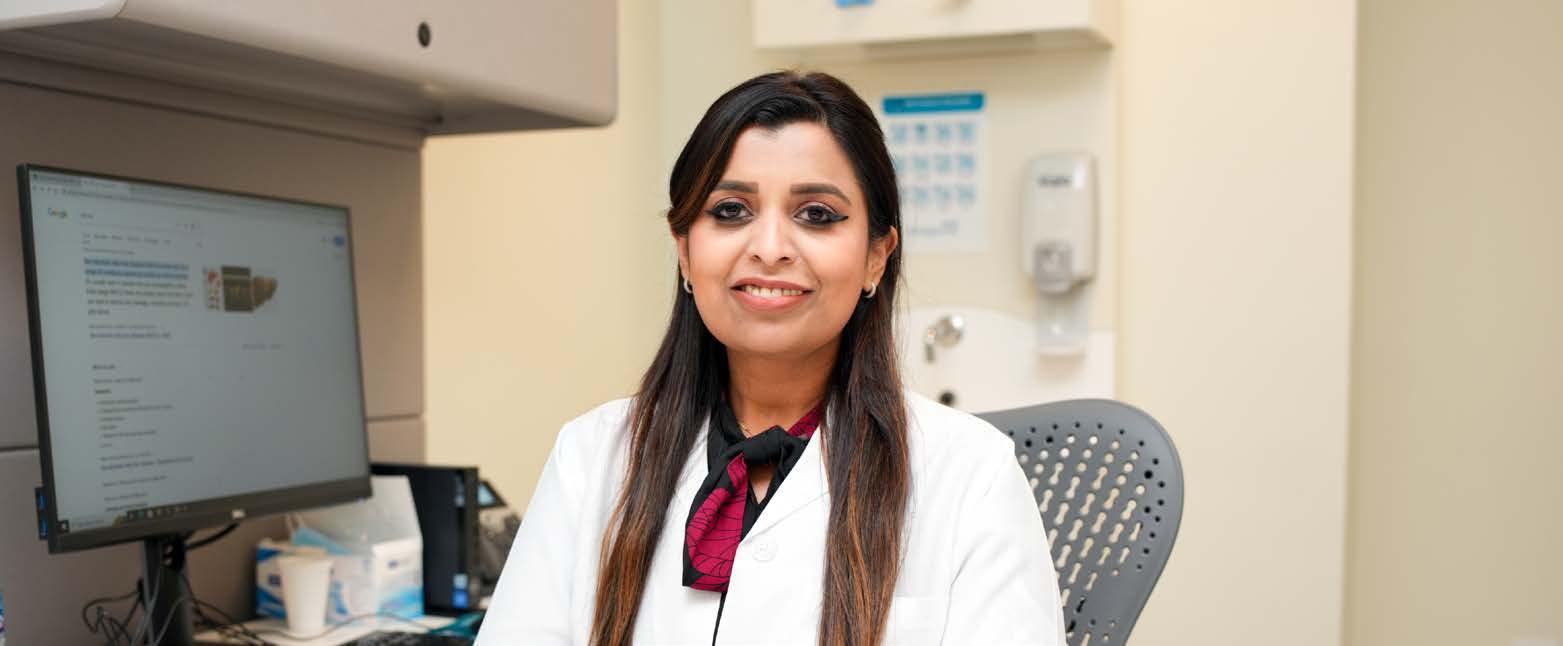
by melena, which is dark tarry stools due to loss of blood from stomach ulcer. Loss of weight, indigestion, nausea and vomiting and fatigue are other symptoms.
How does it usually start? What are the risk factors?
Stomach cancer is when cells in the stomach start to grow out of control. Stomach is an important part of the digestive tract which is like a pouch and has different parts like fundus, body, antrum and pylorus. Cancer can happen in any part of the stomach.
Risk factors include smoking, growths of noncancerous cells in the stomach, called polyps, family history of stomach cancer. Family history of genetic syndromes that increase the risk of stomach cancer and other cancers, such as hereditary diffuse gastric cancer, Lynch syndrome, juvenile polyposis syndrome, PeutzJeghers syndrome and familial adenomatous polyposis. The increased use of refrigeration for food storage, which has led to people eating salted and smoked foods and infection with
"We provide a comprehensive and multidisciplinary care for gastric cancer"
Helicobacter pylori (H pylori) bacteria are also known risk factors.
What are the stages of gastric cancer?
The stomach wall has 5 layers: The layers are important in determining the stage (extent) of the cancer, which can affect a person’s treatment options and prognosis . As cancer grows from the mucosa into deeper layers, the stage becomes more advanced and treatment might need to be more extensive. There are stages 0 (localised) to stage 4 (being advanced cancer). Cancer cells in the stomach can invade and destroy healthy body tissue. They might start to grow deeper into the wall of the stomach. In time, cancer cells can break away and spread to other parts of the body. When cancer cells spread to another part of the body it's called metastasis.
What are the tests that used to diagnose gastric cancer?
Early detection, diagnosis and staging is the key step in the treatment. Endoscopy with biopsy is the most reliable and accurate test for gastrointestinal conditions, especially ones in the inner lining of the stomach . Advanced endoscopic techniques lead to earlier detection of gastric cancer, which aids in the complete treatment. Biopsies and microscopic examination help in identifying the type of cancer.
Imaging modalities like CT or CAT (computed axial tomography) scans, PET (positron emission tomography) scans, MRI (magnetic resonance imaging) play a significant role in staging and identifying metastasis and activity.
Endoscopic Ultrasound is a test that combines the endoscope with ultrasound, a soundwave generating imaging probe that provides detailed images and information about your digestive tract. It is especially useful in seeing the middle and outer layers beyond the inner lining. This test helps to see the depth of the tumor and whether it has spread with maximum specificity.
What are the new treatments available in Dubai at Clemenceau Medical Center?
At Clemenceau Medical Center, we provide a complete, comprehensive and multidisciplinary care for gastric cancer with involvement of
SURGERY IS THE FIRST OPTION IF STOMACH CANCER HASN'T SPREAD WHICH INVOLVES REMOVING CANCER FROM THE LINING OF THE STOMACH ALL OR PART OF YOUR STOMACH (A PARTIAL OR TOTAL GASTRECTOMY). TREATMENT DEPENDS ON WHERE THE CANCER IS IN YOUR STOMACH, HOW FAR IT HAS GROWN OR SPREAD (THE STAGE), THE TYPE OF CANCER, HOW ABNORMAL THE CELLS LOOK UNDER A MICROSCOPE (THE GRADE), WHETHER THE CANCER HAS SPREAD TO ANOTHER PART OF THE BODY AND GENERAL HEALTH AND LEVEL OF FITNESS.
Gastroenterologist, Surgeon, Medical oncologist, Radiologist, Pathologist and a dedicated team of trained nurses. Early cancer detection and removal by advanced endoscopic procedures like EUS followed by resections (endoscopic mucosal resection or endoscopic submucosal dissection) are available. Advanced imaging modalities like CT, MRI and PET scans are of valuable addition at our center. Surgical options are advanced and precise with use of robotic surgery. A dedicated chemotherapy unit is maintained and monitored by medical oncologists where care is individualised.
In case of advanced cancer which is beyond surgery, skilful endoscopic procedure which involves placement of a stent that goes into the stomach to allow food to pass through is also done at Clemenceau Medical Center. We aim at providing early treatment and a good palliative care when required.
The most effective treatment method for patients with early gastric cancer is resection, which is endoscopy or surgery to remove the cancer. The exact type of procedure will depend on the cancer’s stage and where it is located. Surgery is the first option if stomach cancer hasn't spread which involves removing cancer from the lining of the stomach All or part of your stomach (a partial or total gastrectomy).
Treatment depends on where the cancer is in your stomach, how far it has grown or spread (the stage), the type of cancer, how abnormal the cells look under a microscope (the grade), whether the cancer has spread to another part of the body and general health and level of fitness.
Studies have shown that chemotherapy before and after surgery, or giving chemotherapy and radiation after surgery, improves outcomes. It is important to complete therapy to get the best results.
For more information visit our page: https://cmcdubai.ae/services/ gastroenterology
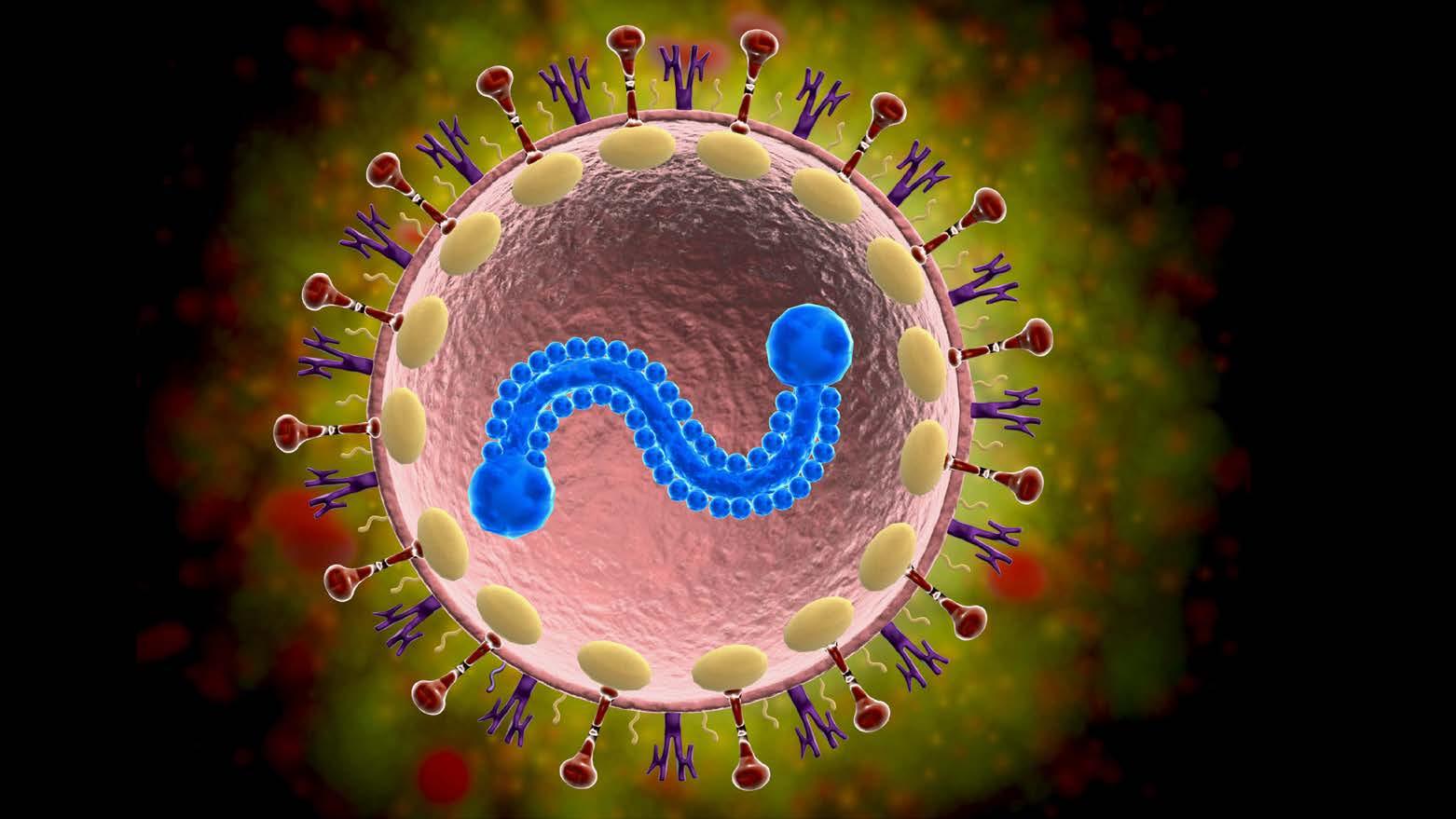
Respiratory Syncytial Virus (RSV) is a common seasonal respiratory infection caused by a group of mucosal viruses that invade the respiratory system and destroy the lining tissues of the airways in the lungs, causing inflammation in the respiratory system. It often affects children under the age of three and infants. This virus is highly contagious and spreads more efficiently during the first few days or weeks of the appearance of symptoms. The transmission of the infection may continue for up to four weeks after the appearance of symptoms in some children and individuals with weakened immune systems. The disease can be transmitted through close contact with the patient, such as through coughing or sneezing, which releases virus-filled droplets into the air and can enter the body through the eyes, nose, or mouth.
Respiratory Syncytial Virus (RSV) infection symptoms can range from mild to severe. In
some cases, it may only cause upper respiratory tract infection or middle ear inflammation, while in others, it can cause pneumonia.
Early symptoms after the end of the incubation period of the respiratory syncytial virus include irritation and inflammation of the mucous membranes lining the upper respiratory tract, leading to congestion, runny nose, and sneezing.
Severe symptoms occur when the virus reaches the lower respiratory tract and include coughing and difficulty breathing due to the obstruction of the airways. This can worsen to the point of causing breathing difficulties in infants and fever, lethargy, and middle ear inflammation, while in others, it can cause pneumonia. The duration of the illness depends on the severity of the infection. If the disease is mild, it can disappear within 5-7 days. However, if the infection spreads to the lower respiratory tract, it often results in persistent coughing and phlegm production, and in some cases, phlegm can be withdrawn from the patient's lung intermittent-
RESPIRATORY SYNCYTIAL VIRUS (RSV) INFECTION SYMPTOMS CAN RANGE FROM MILD TO SEVERE. IN SOME CASES, IT MAY ONLY CAUSE UPPER RESPIRATORY TRACT INFECTION OR MIDDLE EAR INFLAMMATION, WHILE IN OTHERS, IT CAN CAUSE PNEUMONIA.
ly for two to three weeks.
The respiratory syncytial virus (RSV) can cause severe complications, especially in children with weakened immune systems. The most common complications include inflammation of the small airways in the lungs and pneumonia, a common cause of bronchiolitis and pneumonia in children under one. Some symptoms can be severe in adults or older individuals, or people with chronic heart or lung diseases. RSV can also cause severe respiratory infections, including bronchiolitis. In some cases, the condition can recur during the same season, but the severity of symptoms may vary and be similar to those of the common cold and flu.
As the coronavirus that causes respiratory infections is a type of virus, antibiotics will not help. The illness is similar to a common cold in mild cases and does not require medical treatment. The doctor may advise maintaining hydration by drinking fluids and eating a healthy diet regularly, even with a decreased appetite. Other tips include blowing the nose with tissue paper to keep the airways open or gently suctioning excess mucus from a baby's nose.
Over-the-counter pain relievers and fever reducers can be used with the doctor's consultation if the child is experiencing them. Adequate rest and sleep should be taken, and there should be no smoking or exposure to secondhand smoke. In severe cases, the patient may need to be hospitalized and receive intravenous fluids if they cannot eat or drink enough, receive extra oxygen, or undergo intubation by inserting a breathing tube through the mouth into the airway with mechanical ventilation. In most of these cases, recovery continues for only a few days.
Prevention is the only way to avoid infection without treatments or vaccines for this virus. It involves regularly washing and sanitizing hands and avoiding close contact with anyone experiencing symptoms resembling those of a cold or flu. Maintaining good hygiene is one of the most
important preventive measures, and children should be taught how to wash their hands properly and encouraged to do so frequently. For children most susceptible to the virus, doctors recommend monthly injections of Palivizumab, which contain antibodies against the respiratory syncytial virus, during the peak season of its spread. These children have weakened immune systems, were born prematurely, or are infants with other health problems.
The following steps and procedures should be followed to reduce the spread of infection:
• Wash hands and sanitize them continuously before touching or feeding the child. If the child is older, they should be taught how to wash their hands properly.
• Maintain cleanliness and continuously ventilate the home.
• Emphasize not to visit anyone with symptoms similar to the flu; if anyone in the household has them, they should not approach the child or share a room with them.

• Do not share the child's cup, spoon, or other items that can transmit infection.
• Do not smoke or be exposed to secondhand smoke at all.
• Clean and sanitize toys continuously, which is extremely important because the virus can be transmitted to them during the disease's incubation period, which is before the child's symptoms appear.
PREVENTION IS THE ONLY WAY TO AVOID INFECTION WITHOUT TREATMENTS OR VACCINES FOR THIS VIRUS. IT INVOLVES REGULARLY WASHING AND SANITIZING HANDS AND AVOIDING CLOSE CONTACT WITH ANYONE EXPERIENCING SYMPTOMS RESEMBLING THOSE OF A COLD OR FLU
Varicose dermatitis refers to the blood vessels that return blood without enough oxygen from the external parts of the body to the heart and lungs. When the veins become abnormally thick, they are called varicose veins. They are most commonly found in the legs and thighs. Spider veins are smaller marks than varicose veins, their color is red, purple, or blue, and they can be easily seen through the skin. They also usually appear on the legs and face.
Dr. Atef Ben Youssef, a Consultant in Open Heart and Vascular Surgery at Al-Ahli Hospital, explained that this disease is very common, affecting approximately 40% of the population. According to estimates, many people suffer from an advanced degree of venous insufficiency, with symptoms such as leg pain, leg swelling, and muscle tension.
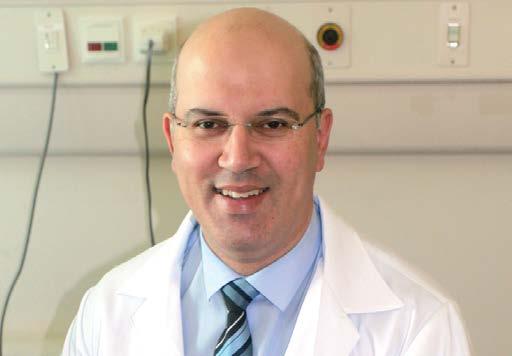
The venous system in the legs directs blood from the legs to the central vein located in the abdominal area and from there to the heart. Blood flow in the veins is affected by external factors such as gravity, leg muscles, resistance in the abdominal cavity, and an internal system of unidirectional non-return valves that force venous blood to flow in the desired direction.
Varicose veins in the legs arise due to a disorder in the venous blood drainage system,
which causes venous blood to accumulate in the leg veins, leading to increased pressure in the venous system. This phenomenon is called venous hypertension, and the most common disorder resulting from it is a malfunction of the valves in the veins. This malfunction in valve function may be primary (usually congenital) or secondary (usually due to valve damage caused by blood clots). Another cause is the weakness of the muscle contraction in the calf, which is considered the muscular pumping tool of the vein. This weakness may result from paralysis, prolonged sitting, and lack of physical activity, gradually leading to developing venous hypertension.
Other common causes include the formation of blood clots in the veins that obstructs blood flow entirely and increased pressure within the abdomen or pelvis that prevents smooth blood flow from the leg veins to the pelvis and the main vein in the abdomen. Known causes of this include pregnancy, excessive obesity, and tumors in the pelvis.
As pressure builds up in the venous system, fluids begin to accumulate in the soft tissues, leading to the proliferation of connective tissue, damage to the lymphatic system, damage to microcirculation, the appearance of fibrin deposits, and damage to skin cells leading to the development of ulcers. With the technological advancements in modern medicine, surgical interventions for venous insufficiency (varicose veins) are now only recommended in very rare cases. Treatment now involves using very small catheters to treat the affected vein, similar to a blood draw, and utilizing endovascular techniques such as laser therapy or radiofrequency technology. Venaseal closure with biological glue injection is also available at our hospital. In addition, cosmetic treatment of spider veins can be achieved through superficial injections, which have a high success rate exceeding 80%.
VARICOSE VEINS IN THE LEGS ARISE DUE TO A DISORDER IN THE VENOUS BLOOD DRAINAGE SYSTEM, WHICH CAUSES VENOUS BLOOD TO ACCUMULATE IN THE LEG VEINS, LEADING TO INCREASED PRESSURE IN THE VENOUS SYSTEM. THIS PHENOMENON IS CALLED VENOUS HYPERTENSION, AND THE MOST COMMON DISORDER RESULTING FROM IT IS A MALFUNCTION OF THE VALVES IN THE VEINS





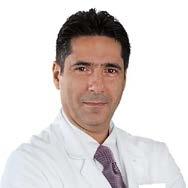
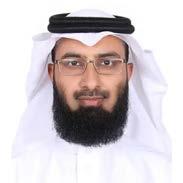



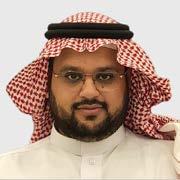
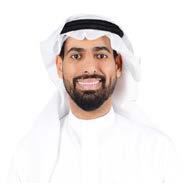








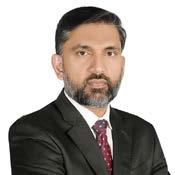






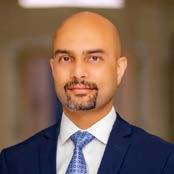


Some heart diseases can lead to a disturbance in the electrical activity of the heart, prompting doctors to perform an electrocardiogram (ECG) to detect and diagnose them, especially when specific symptoms are present, such as chest pain, difficulty breathing, palpitations, or irregular heartbeats. The ECG is one of the necessary tests that detect health problems related to the electrical function of the heart, and it is one of the simple and painless tests that record the electrical activity of the heart. The heartbeats are generated from electrical impulses produced in the upper part of the heart, then transmitted to the lower part. This electrical activity is detected by attaching several electrical electrodes to different skin areas to record the heart's electrical activity.
As is known, the heart can convert electrical work from electrical signals to a graph drawn on paper by recording heart rhythms, and the electrical activity makes the heart contract. Therefore, it is possible to identify problems that your heart may be exposed to regarding rate and rhythm when measuring it.The heart has an electrical system that helps it contract and relax regularly and pump blood. A specialized cardiologist can analyze the results of an electrocardiogram immediately during the test, which takes no more than five minutes and is painless for the patient.
Doctors rely on electrocardiograms to diagnose several conditions, including:
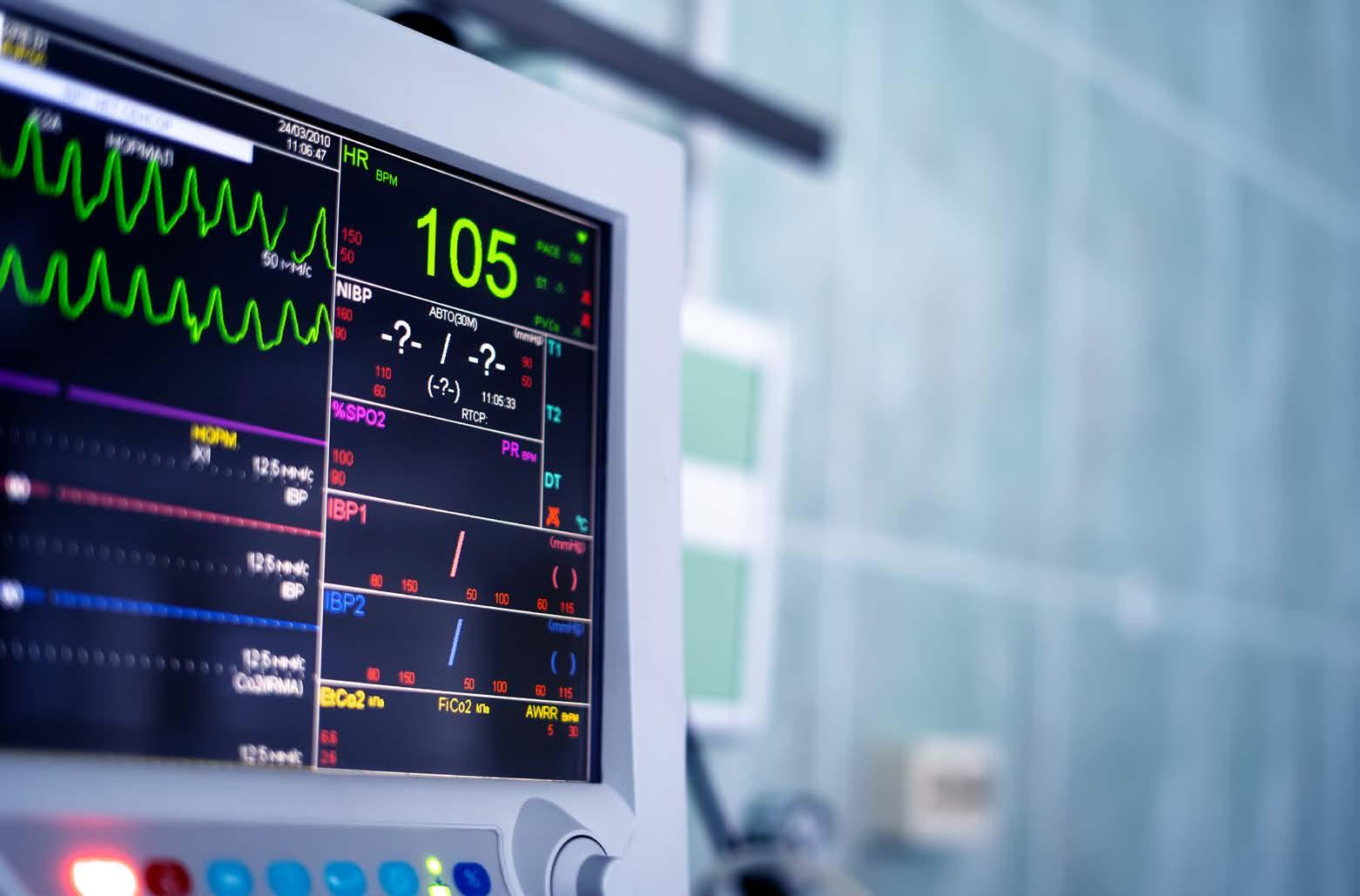
• Examining the electrical function of the heart
THE DEVICE CAPTURES THE ELECTRICAL SIGNAL IN THE HEART AND CONVERTS IT INTO AN ECG.
• Checking the heart's safety in the presence of risk factors for heart disease, such as chronic diseases like diabetes, high blood pressure, high cholesterol, smoking, or a family history of heart disease.
• Diagnosing heart rhythm disorders
• Diagnosing the cause of chest pain, which may be due to acute heart failure, pericarditis, myocarditis, or angina pectoris
• Diagnosing the causes of symptoms related to heart disease, such as chest pain, shortness of breath, palpitations, and dizziness
• Diagnosing complications of heart disease, such as heart enlargement, heart failure, and heart rhythm disorders.
Each heartbeat of the heart starts with an electrical signal generated by specialized cells located in the heart's right atrium, called the sinoatrial node. This node is connected to the left atrium via an electrical pathway, which causes both atria to contract simultaneously. Then, the nerve signal travels to what is called the atrioventricular node, which slightly delays the electrical impulse before it reaches the ventricles via nerve fibers to cause their contraction. It should be noted that these electrical pulses are produced very precisely and coordinated. An electrocardiogram (ECG) test can detect any disruption in this coordination.
This device can capture electrical signals and convert them into a graph. Wires from an electrocardiogram (ECG) machine are attached to electrodes, which are metal strips that conduct electricity. The electrodes are placed on each arm and leg and at six points on the chest above the heart. These electrodes pick up the electrical impulses produced by the heart with each beat and transmit them to an amplifier within the ECG machine. The amplified signals then flow through a thin wire coil suspended in a magnetic field, causing the wire to move due
to the interaction between the electrical signals and the magnetic field. A sensitive lever records the movement of the wire onto a moving graph paper, resulting in a graph of the heart's electrical activity known as leads.
Each heartbeat produces a series of waveforms; a regular heartbeat has a specific waveform pattern. Certain types of heart disease can recognizably alter this known pattern. Each electrode connected to the body is like a camera, and the doctor places ten electrodes on the human body - one on each arm, one on each leg, and at six points on the chest - thereby obtaining ten cameras or electrodes from different directions. Each camera produces another image of the heart because each one captures a different angle of the same view.
After completing the heart monitoring and reading the results, a doctor can detect many heart-related diseases. They can discover if the patient is suffering from acute heart failure, cardiac arrhythmias, enlarged heart muscle, pericarditis, myocarditis, or an imbalance in the body's salt levels. The monitoring takes the form of waves with several sections that come out of the device, and the doctor examines them to see the progress of the electrical signal in the heart. The doctor then reads and analyzes the waves.
An electrocardiogram (ECG) can reveal disorders in the production and conduction of the electrical wave. It can also indicate conditions resulting from an imbalance in the body's salt levels, drug toxicity, or irregular heart function. Changes in heart monitoring may reveal the presence of heart muscle failure, whether recent or old.
The electrocardiogram can examine the heart rate to determine if there is an irregularity in the heartbeat's speed. Heart monitoring also helps determine the heart rate and rhythm to determine if it is fast or slow.
Heart monitoring can also detect evidence of a previous heart attack and the extent of damage to the heart or determine if blood and oxygen are not reaching the heart adequately.
ELECTROCARDIOGRAM (ECG) CAN REVEAL DISORDERS IN THE PRODUCTION AND CONDUCTION OF THE ELECTRICAL WAVE. IT CAN ALSO INDICATE CONDITIONS RESULTING FROM AN IMBALANCE IN THE BODY'S SALT LEVELS, DRUG TOXICITY, OR IRREGULAR HEART FUNCTION. CHANGES IN HEART MONITORING MAY REVEAL THE PRESENCE OF HEART MUSCLE FAILURE, WHETHER RECENT OR OLD.
Additionally, an electrocardiogram can identify distortions in the heart's walls, heart defects, and other heart problems.

When the results are normal, the heart rhythm is at a rate of 60-100 beats per minute.
However, if the results are abnormal and indicate the presence of heart disease, the results appear as follows:
• Slowing the heart rate to less than 60 beats per minute.
• Acceleration of the heart rate to more than 100 beats per minute.
• Irregular heart rhythm.
• Specific changes in the electrocardiogram may indicate several diseases, most notably the elevation or depression of the ST segment, which in most cases means acute heart failure.
It is necessary to point out in this field that this type of examination is useless in angina cases requiring other tests for diagnosis. Additionally, in some cases, especially with a family history of heart disease, the result of an electrocardiogram alone does not indicate the presence or absence of heart disease. The patient's medical history, physical examination, electro-
cardiogram, and other tests should be used to diagnose the patient's condition. An electrocardiogram does not indicate the possibility of heart failure.
An exercise test is used to diagnose angina. During this test, the person performs physical work, which can cause symptoms to appear if there is heart disease and changes in the electrocardiogram. Many factors can affect the test's accuracy, such as poor electrode adhesion, movement during the test, exercise before the test, anxiety, or deep breathing during the test. Some changes in the electrocardiogram may not appear until several hours after symptoms occur, so it is essential to monitor the patient's condition and perform an electrocardiogram after several hours. In some cases, changes in the electrocardiogram may appear after physical exertion, and this test is called an exercise test.
In many cases, some changes in the electrocardiogram are permanent and known due to heart disease. Therefore, older adults and heart disease patients are advised to carry an electrocardiogram with them permanently when visiting a doctor or having an electrocardiogram. Reviewing previous electrocardiograms and comparing them to the current one is essential for these individuals.
WHEN THE RESULTS ARE NORMAL, THE HEART RHYTHM IS AT A RATE OF 60-100 BEATS PER MINUTE

